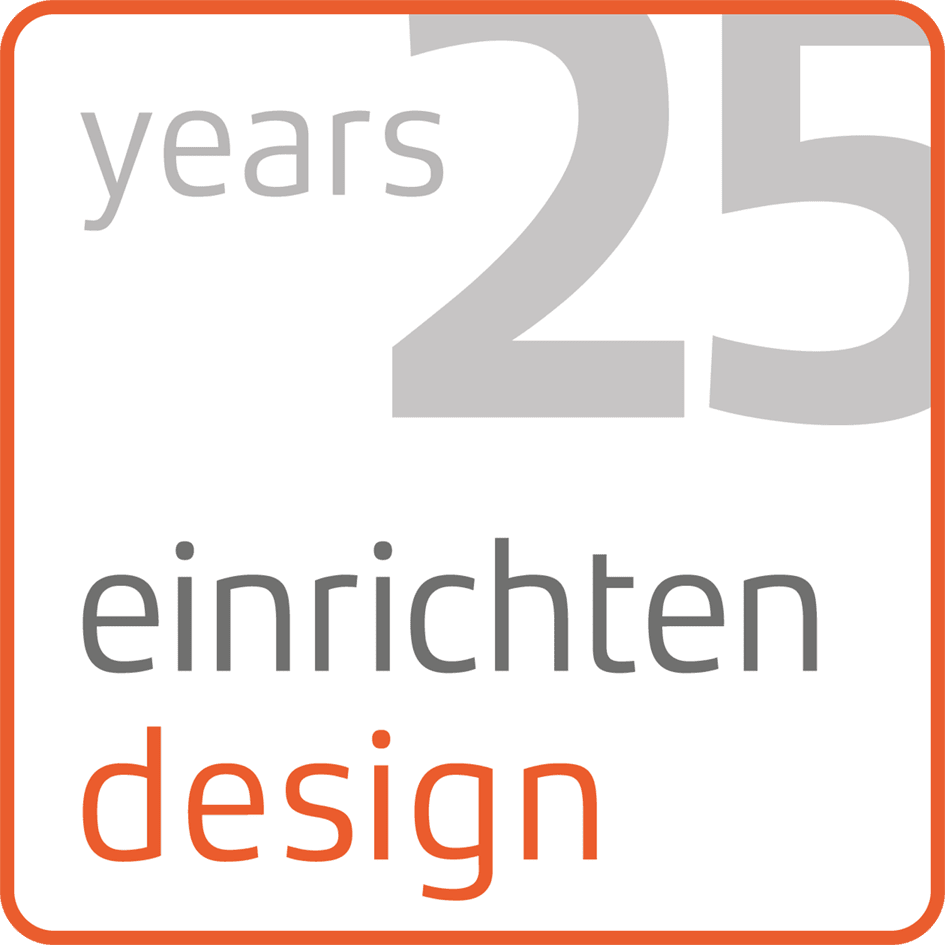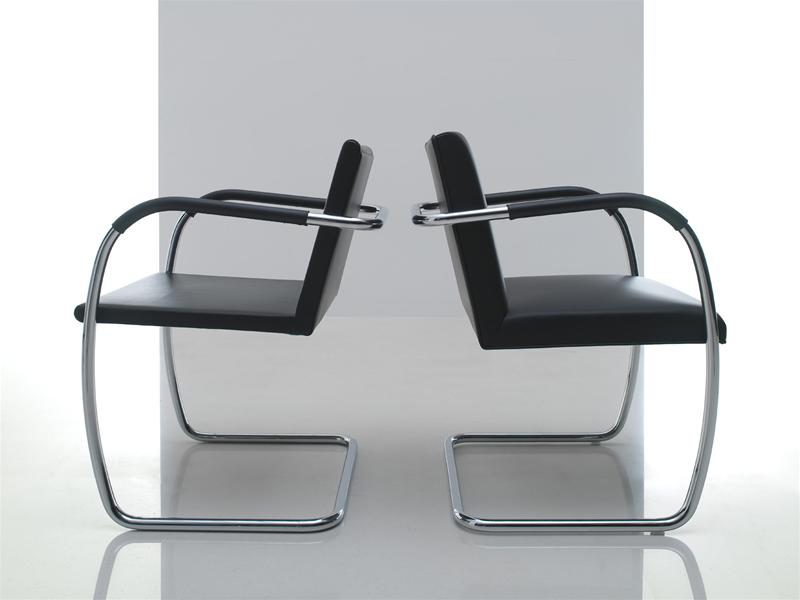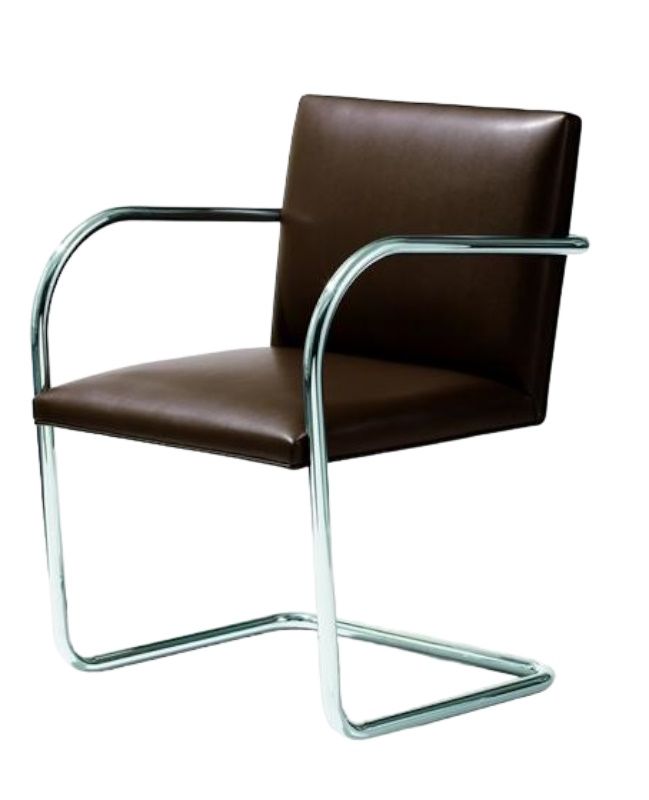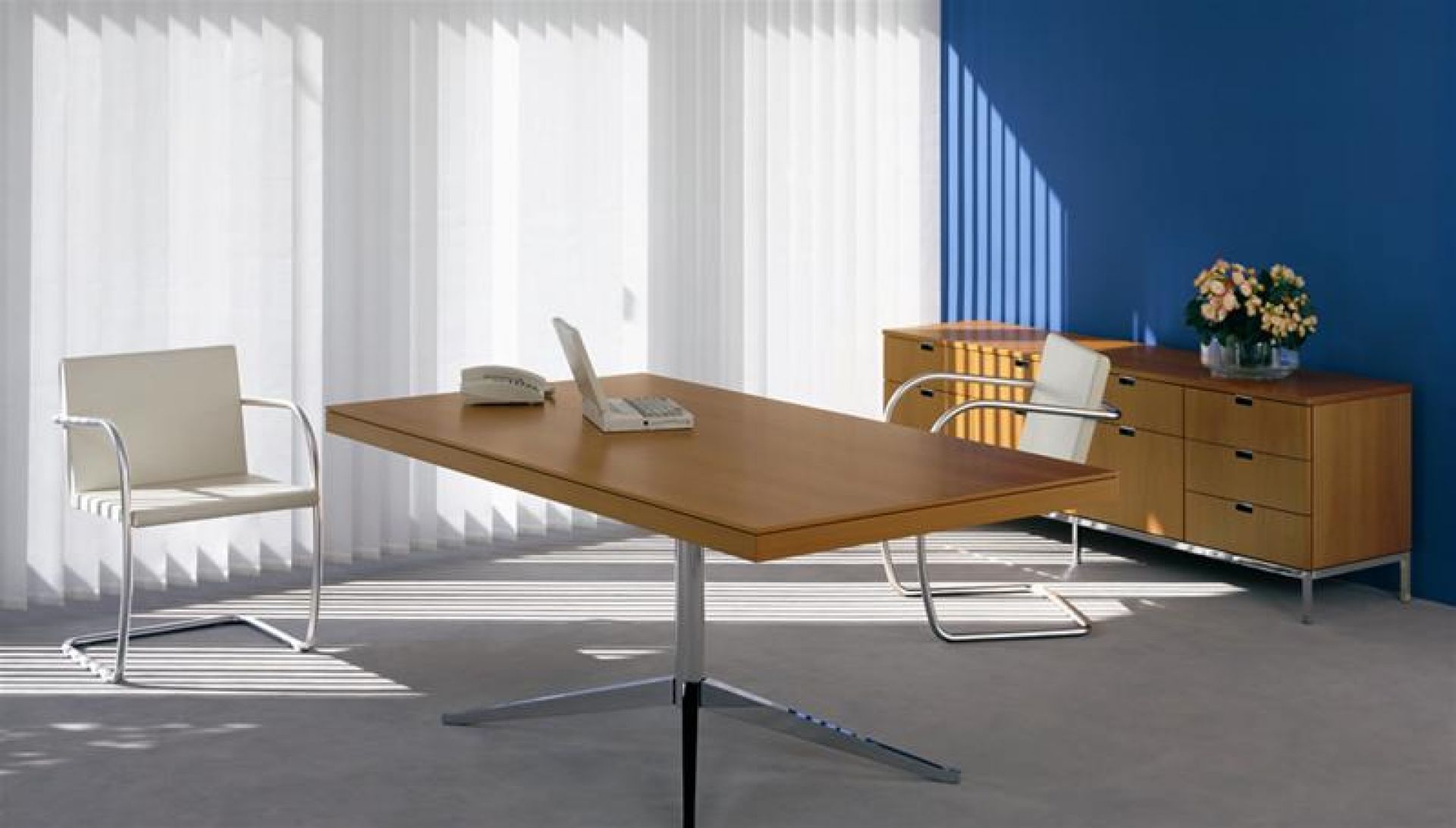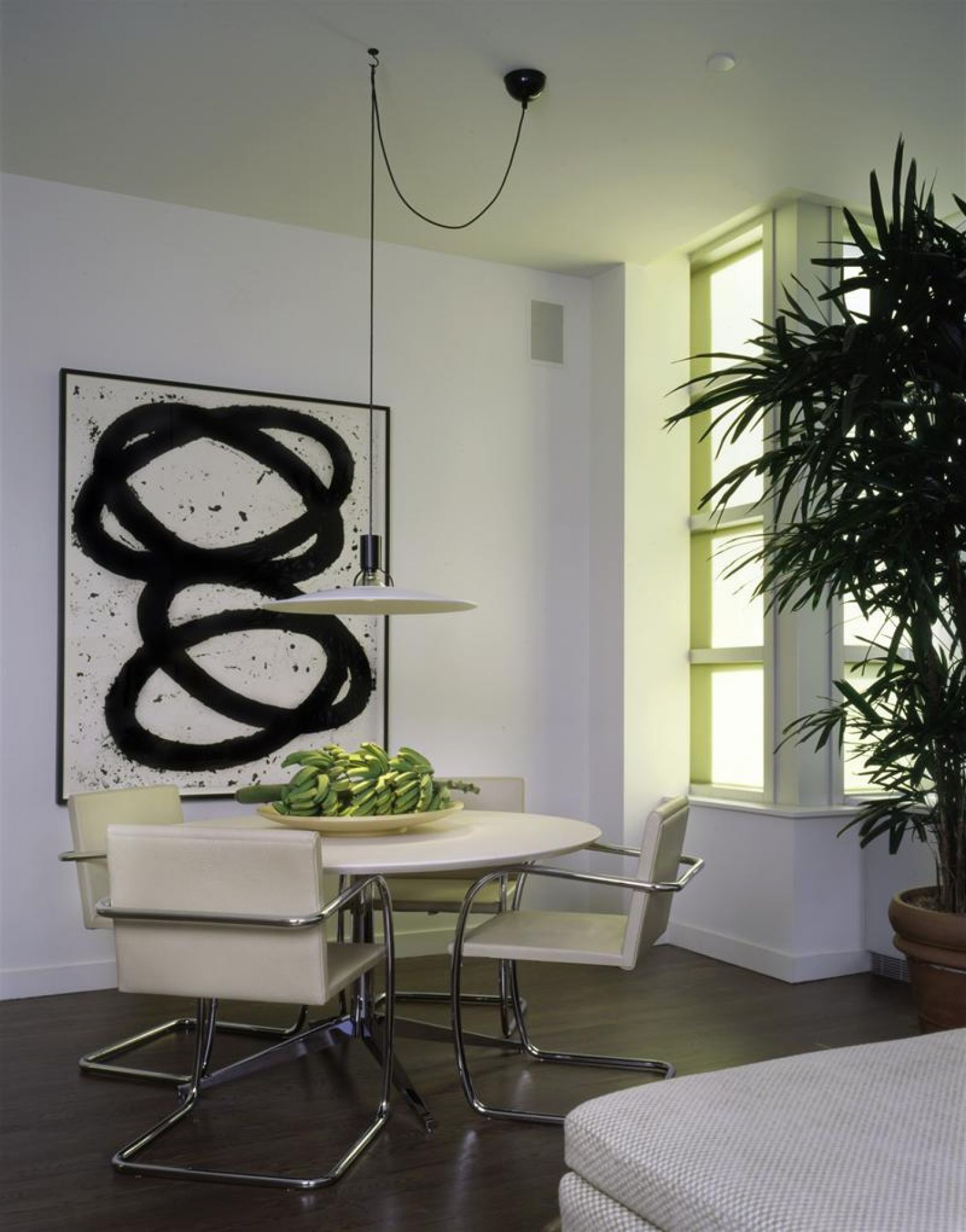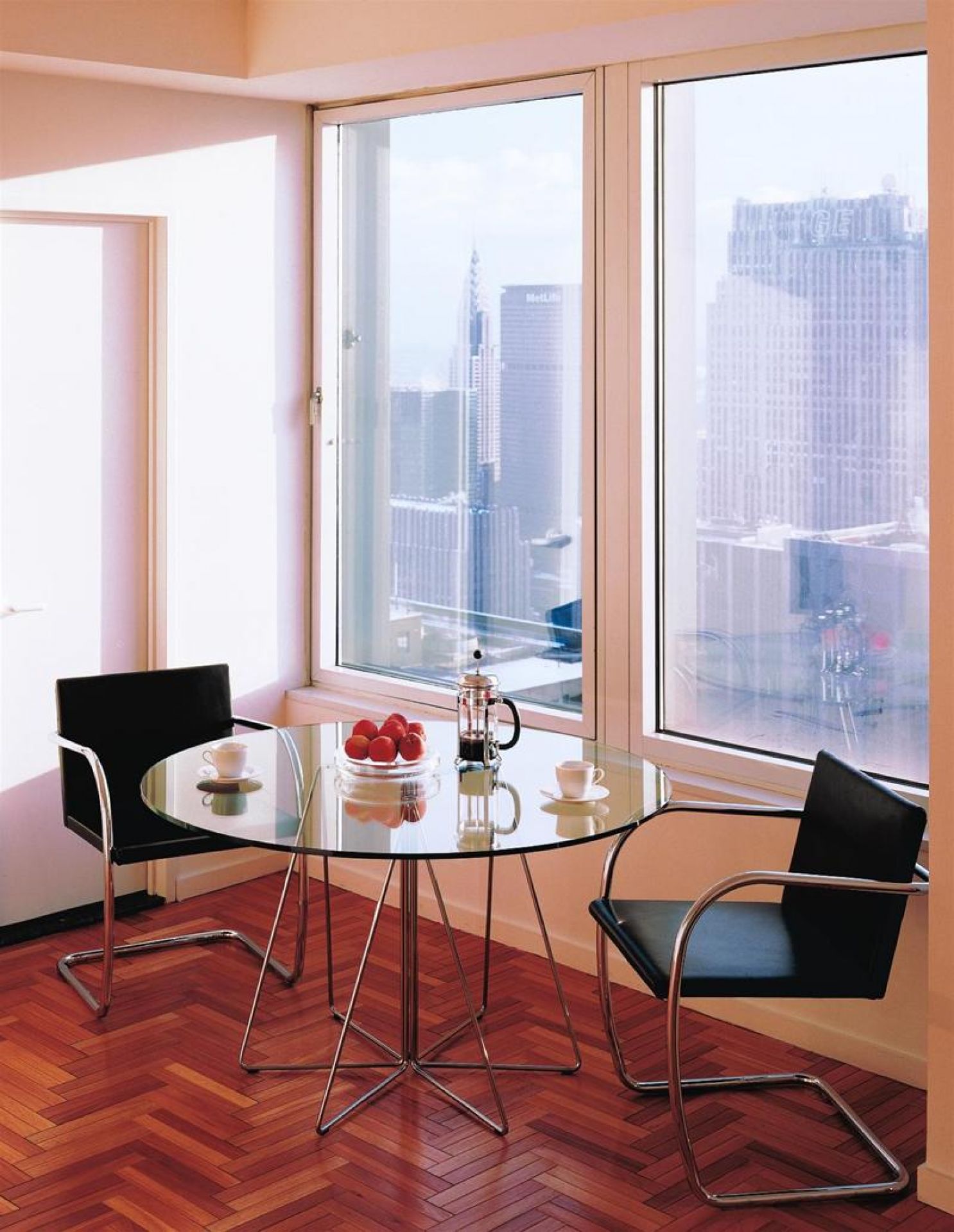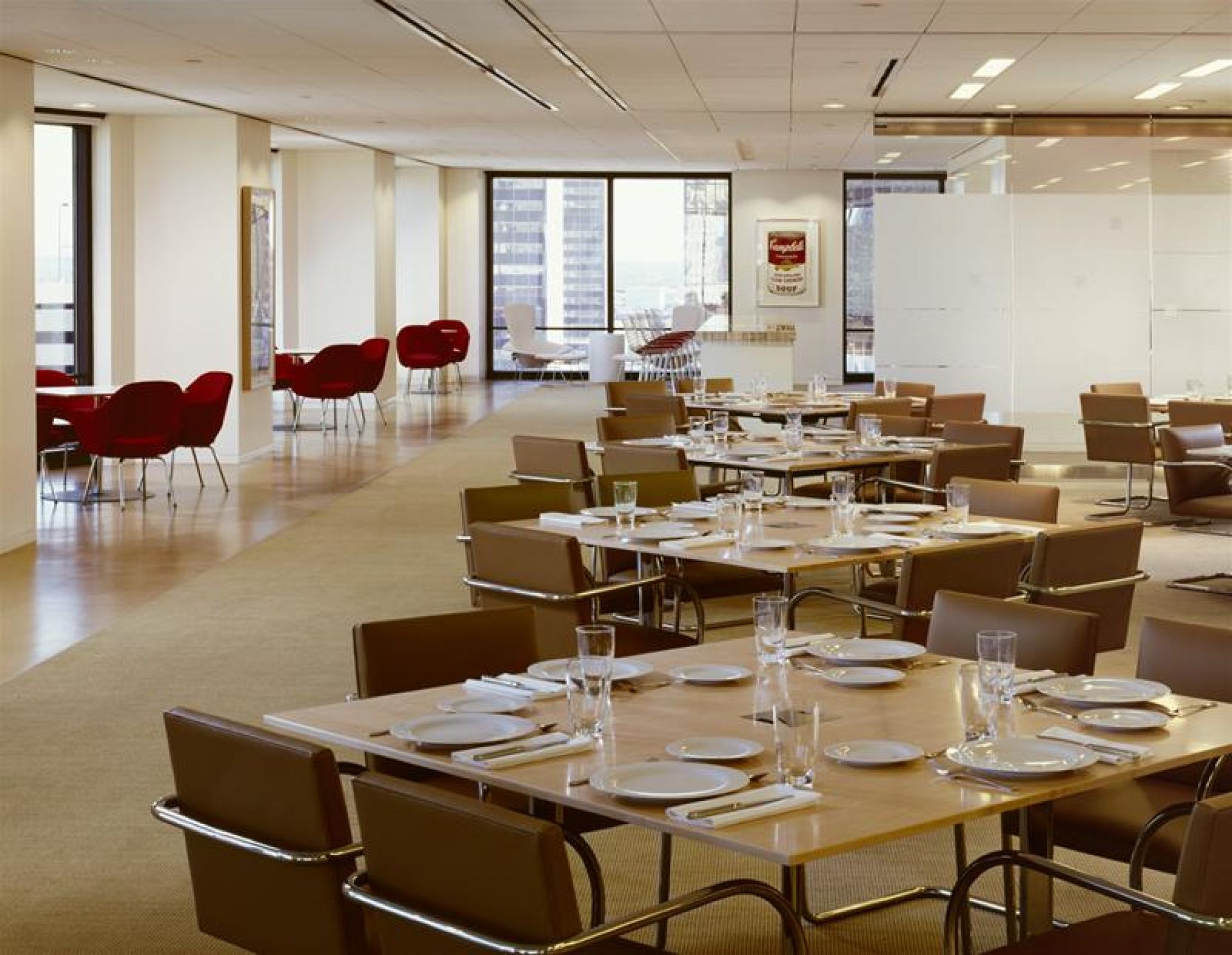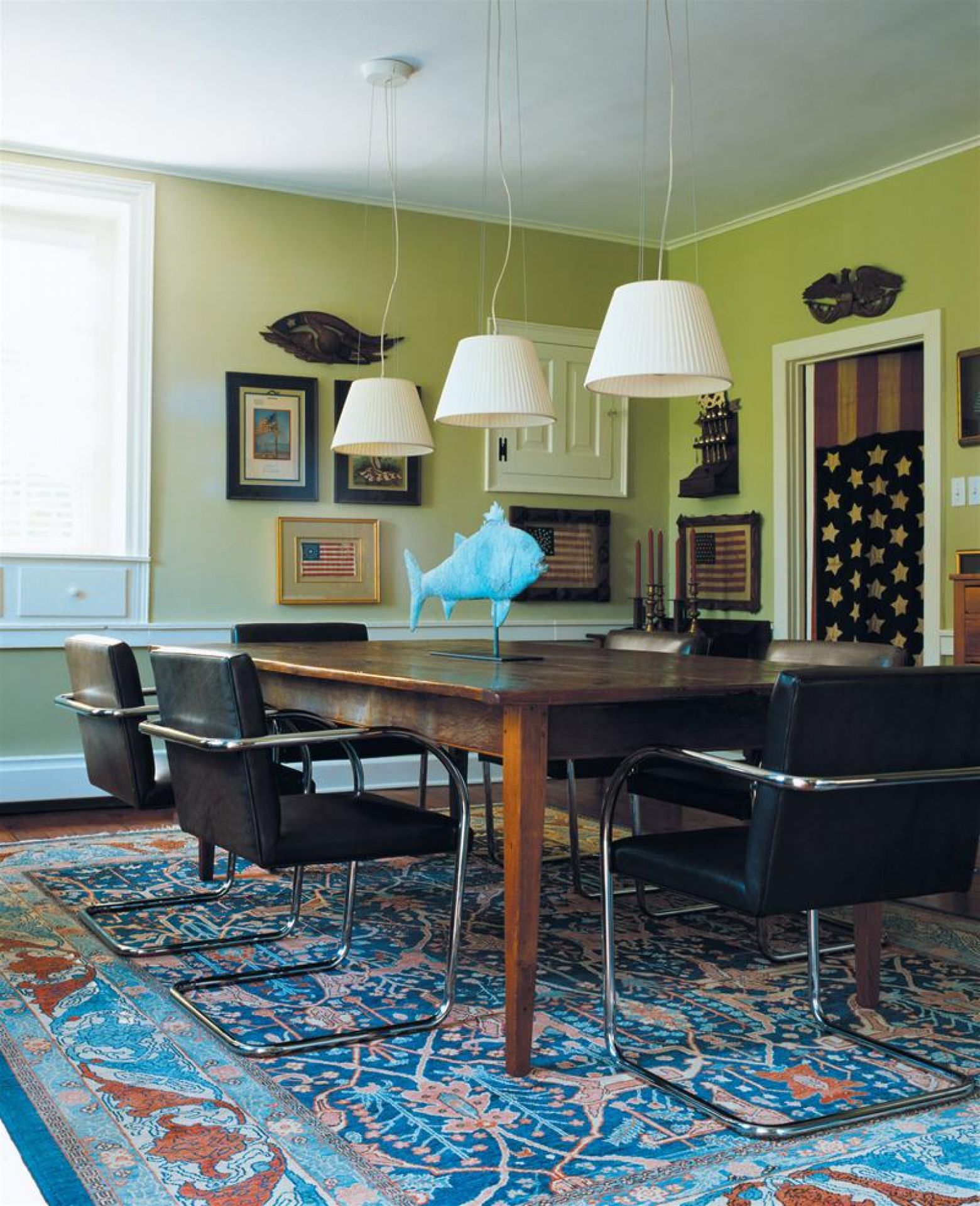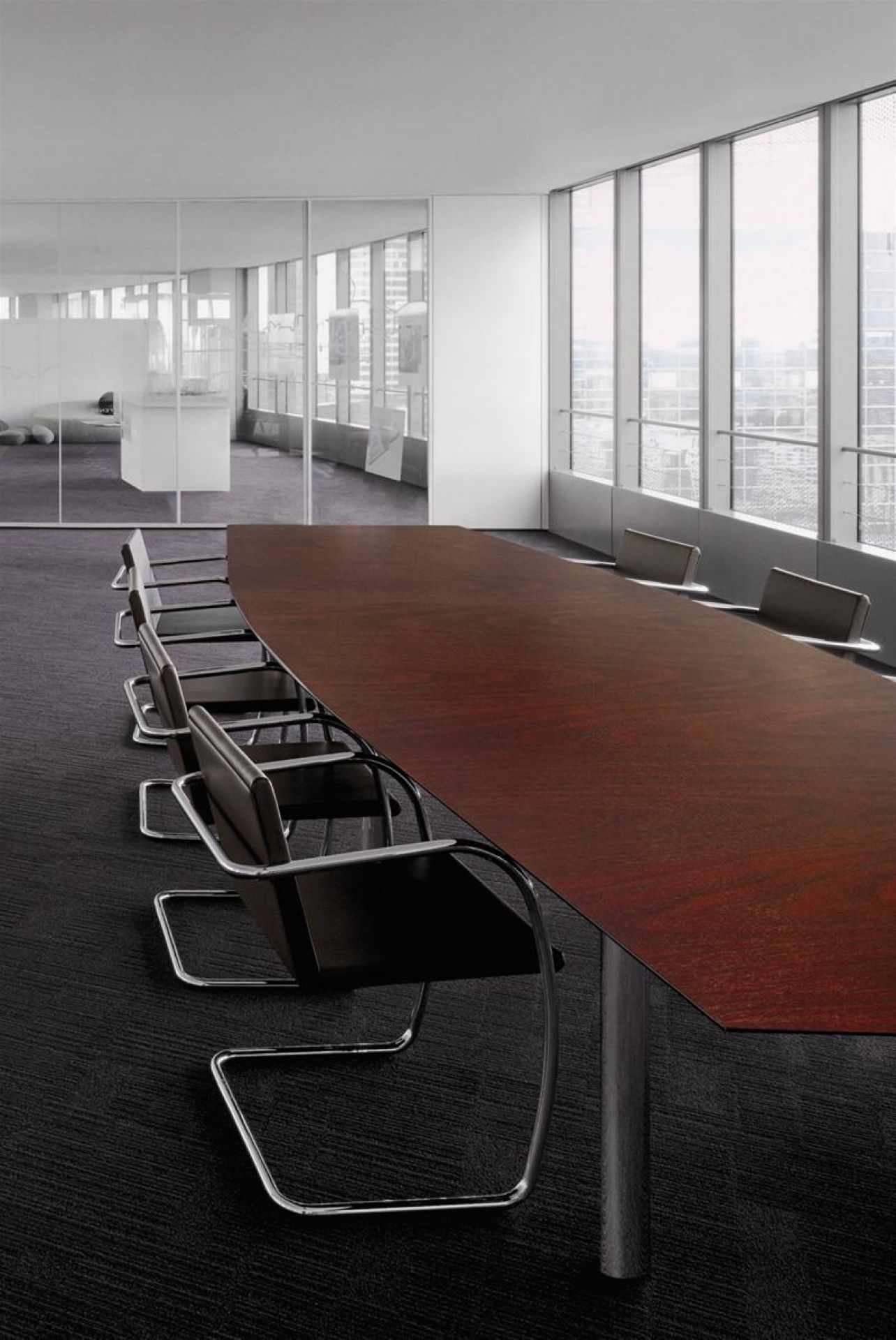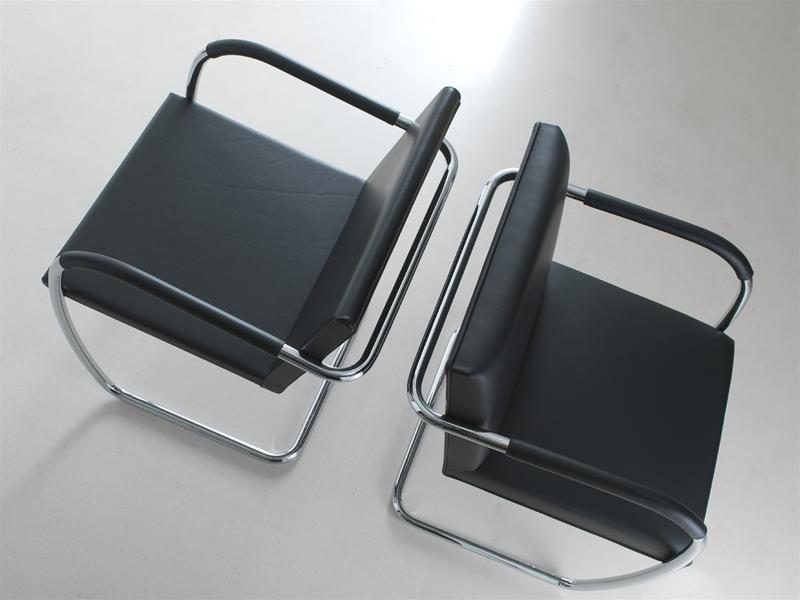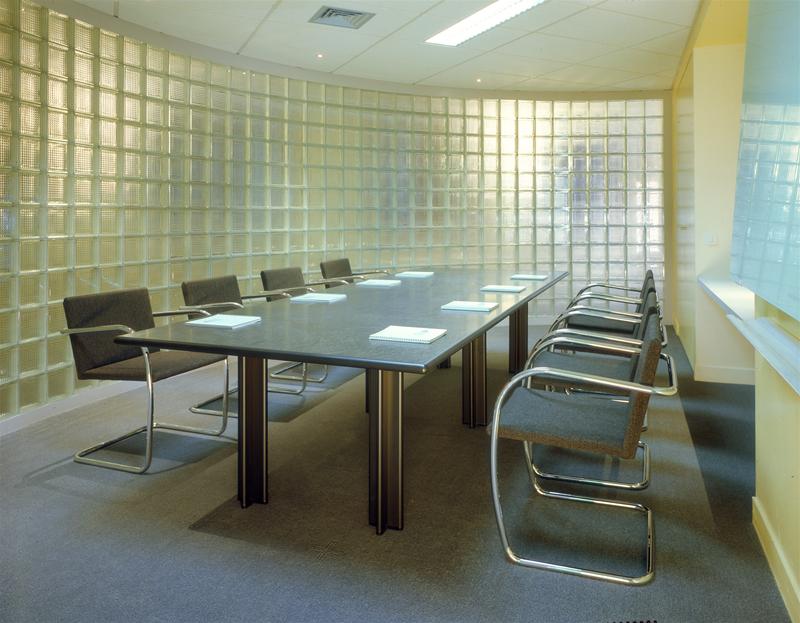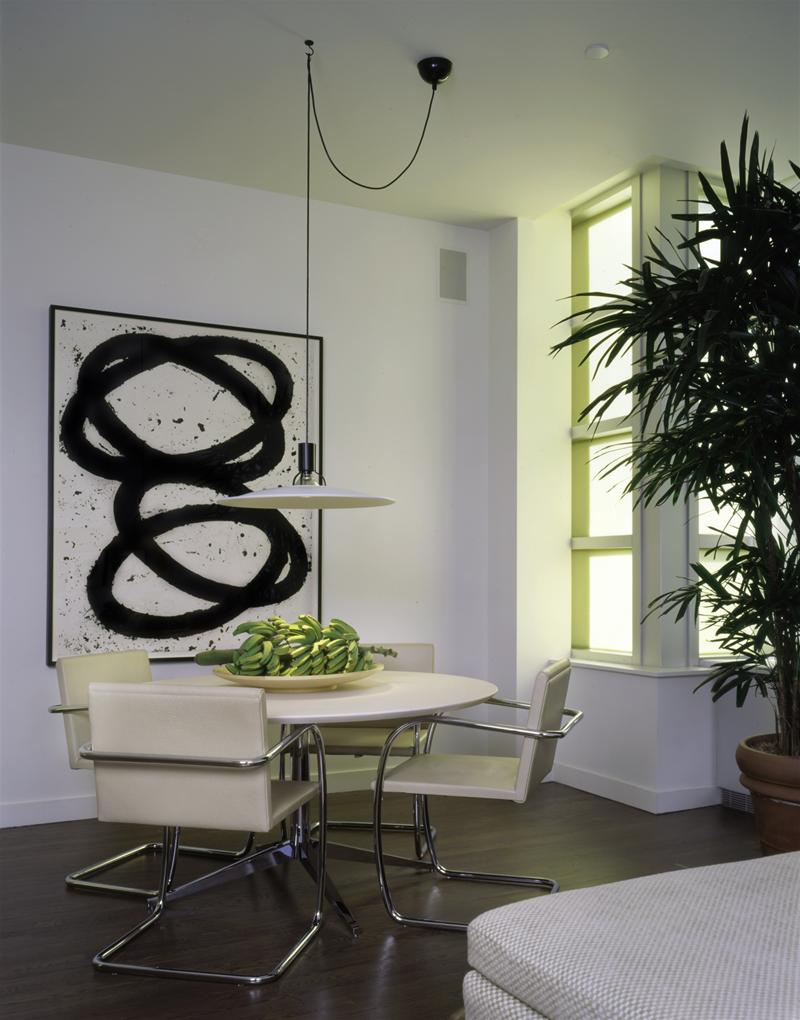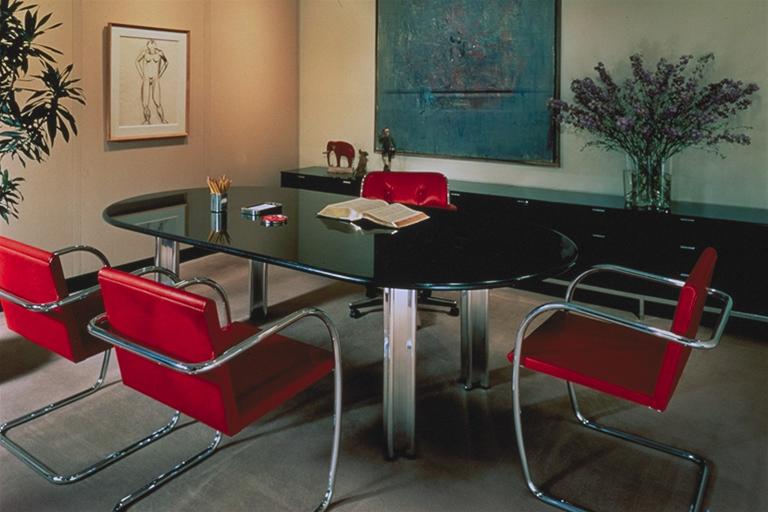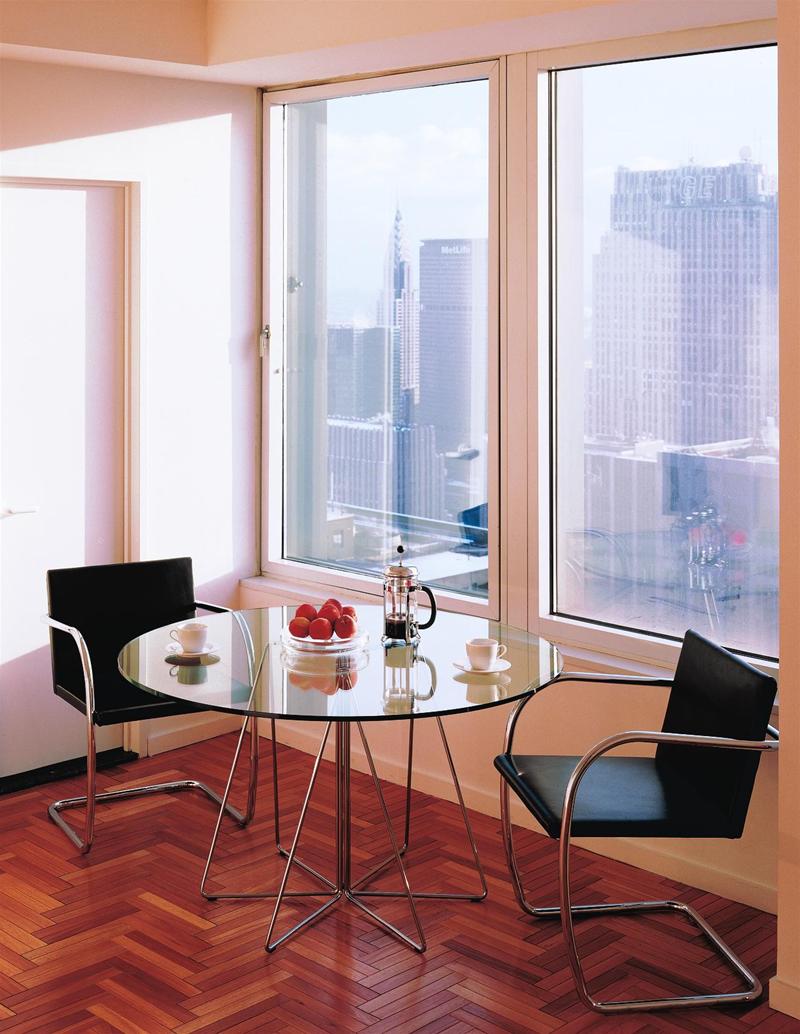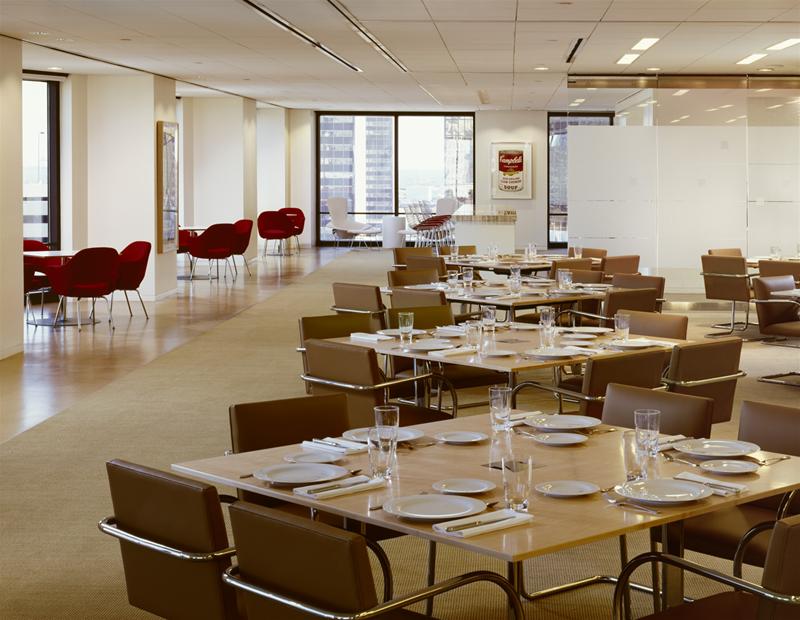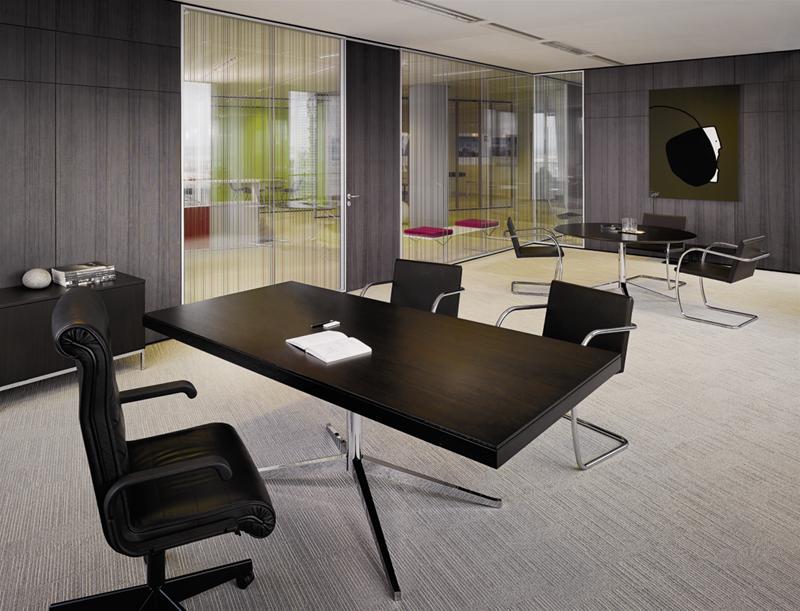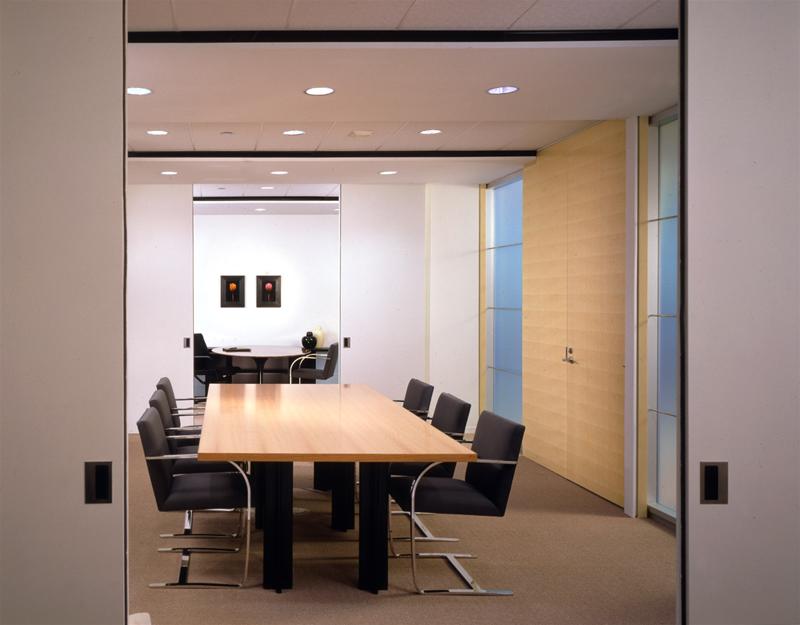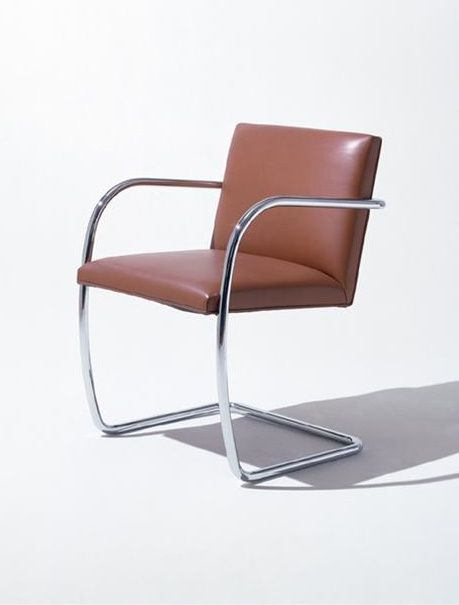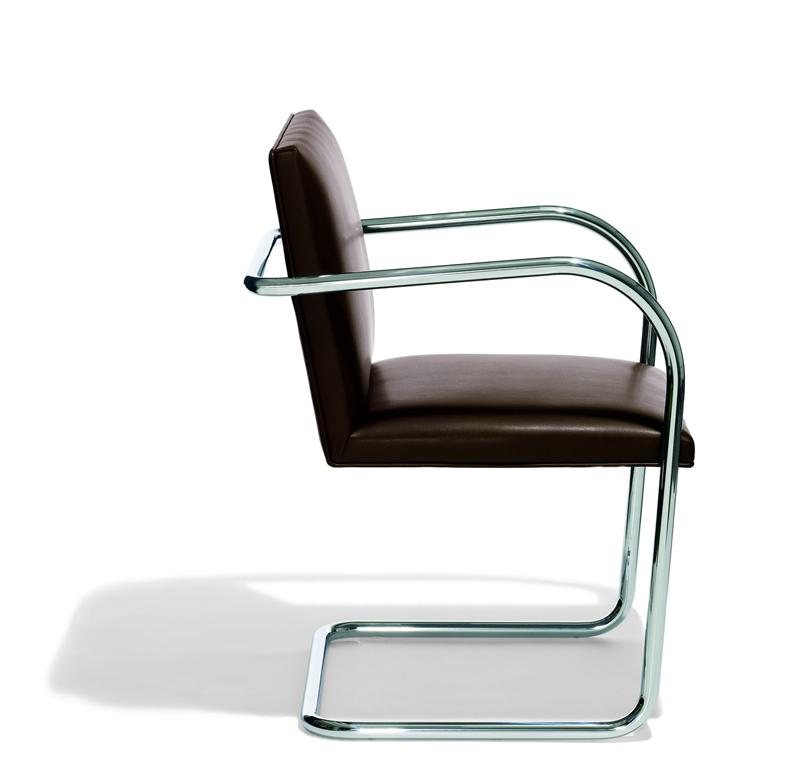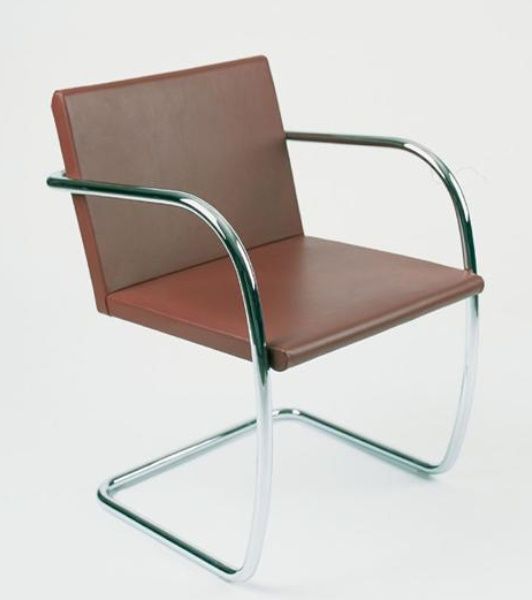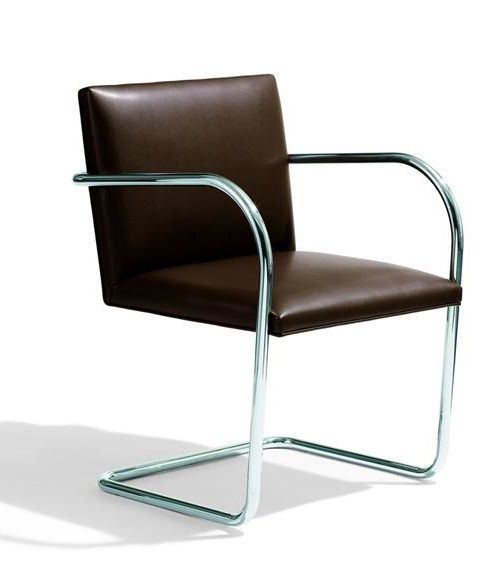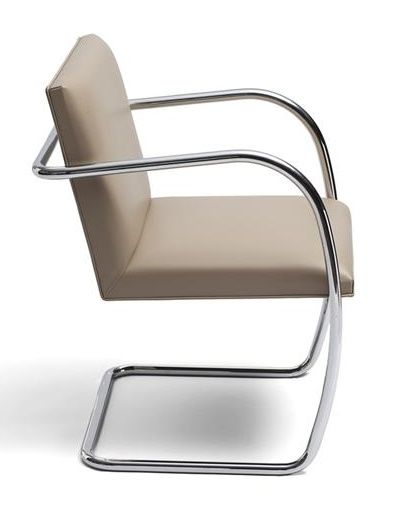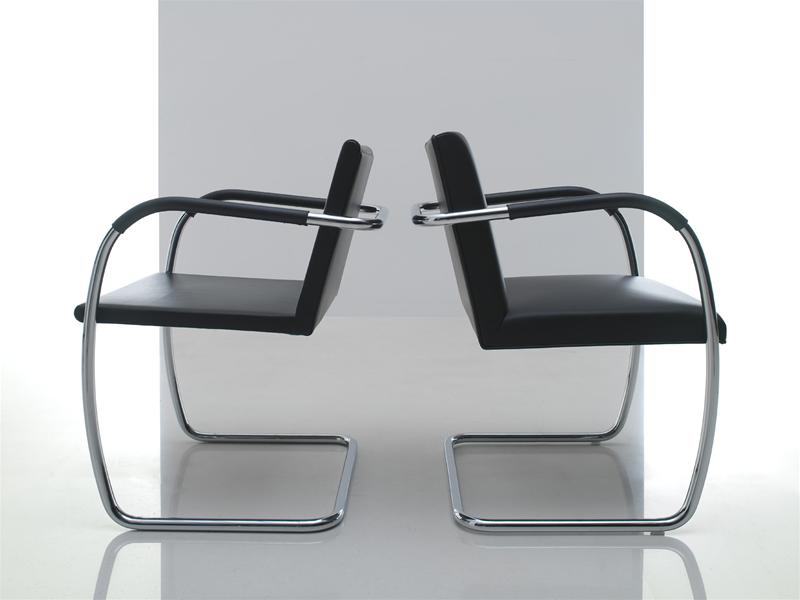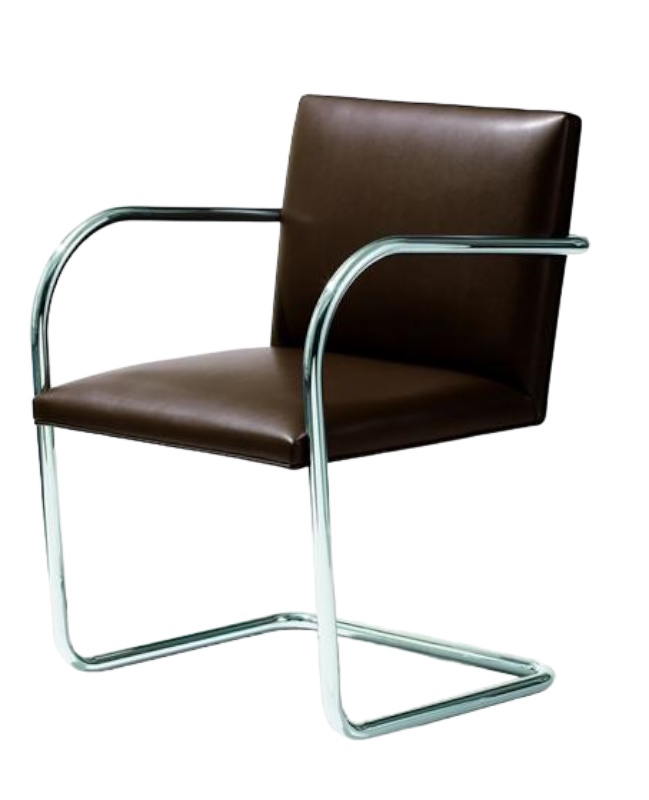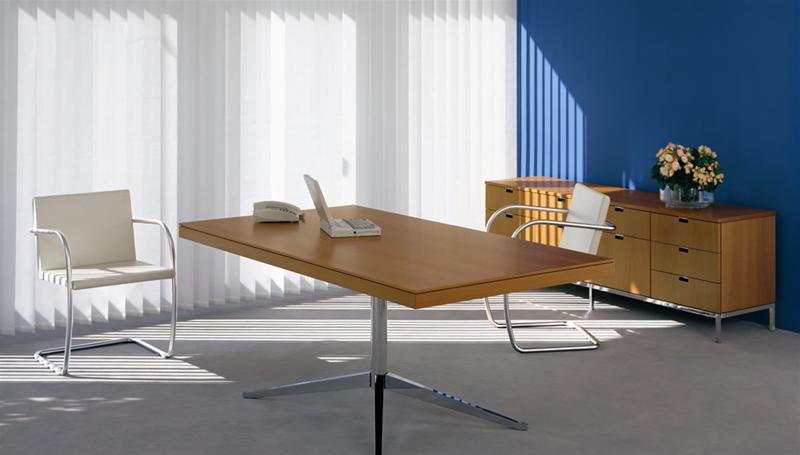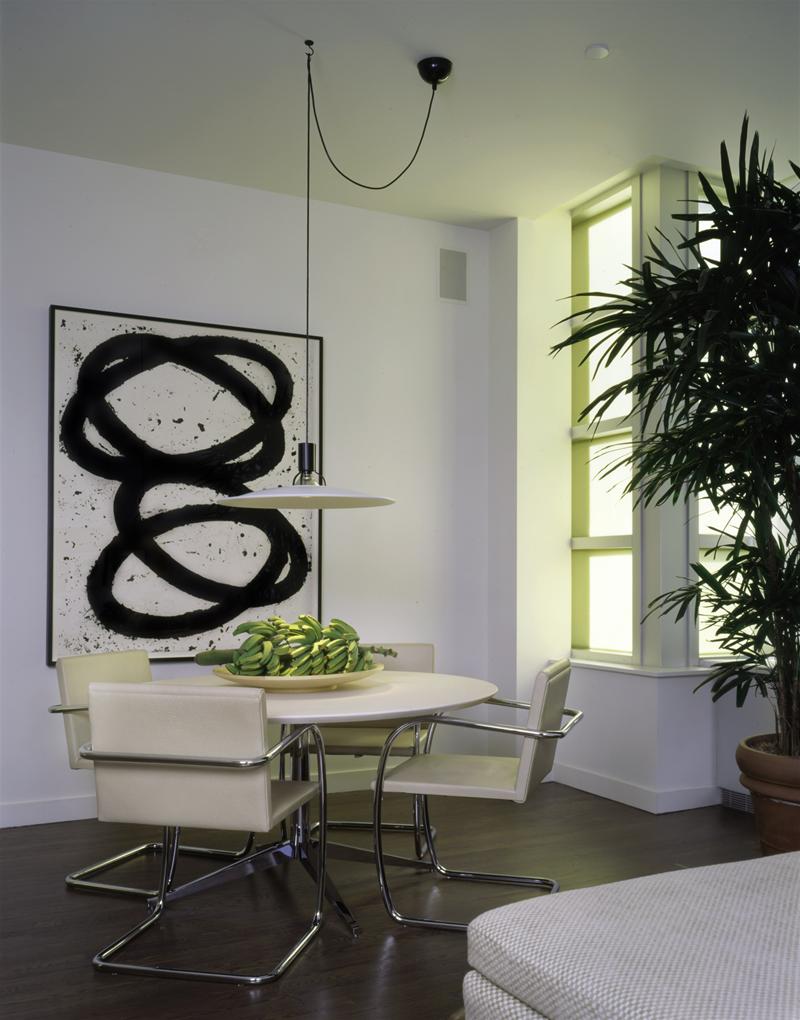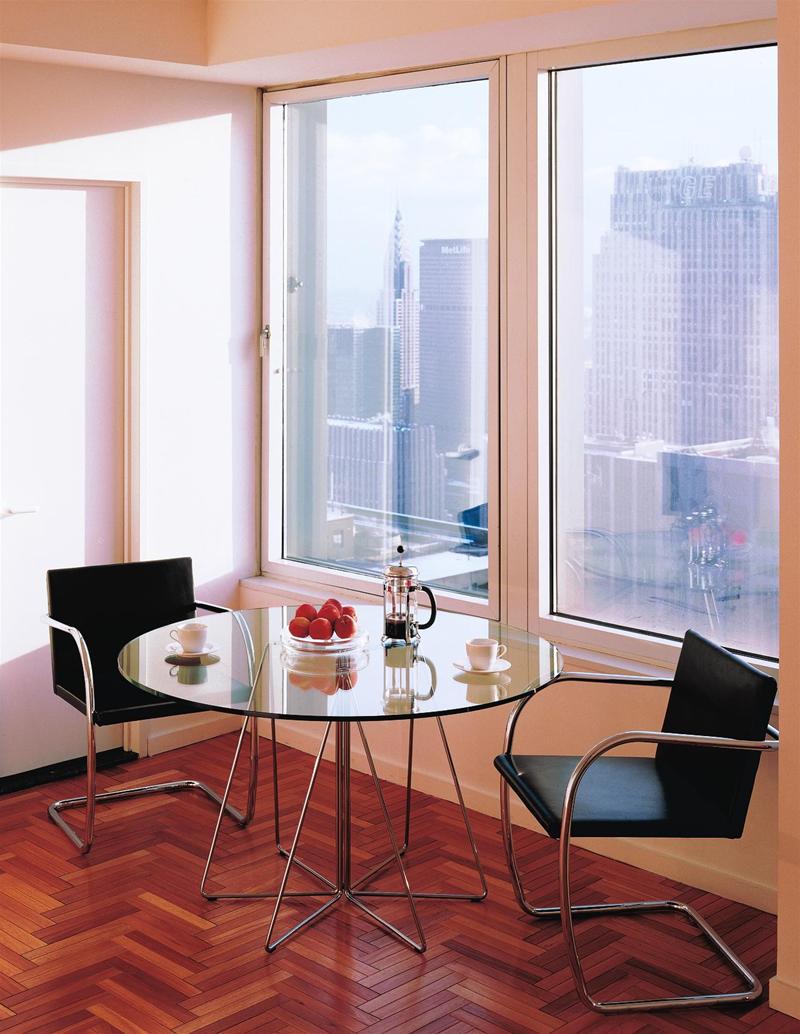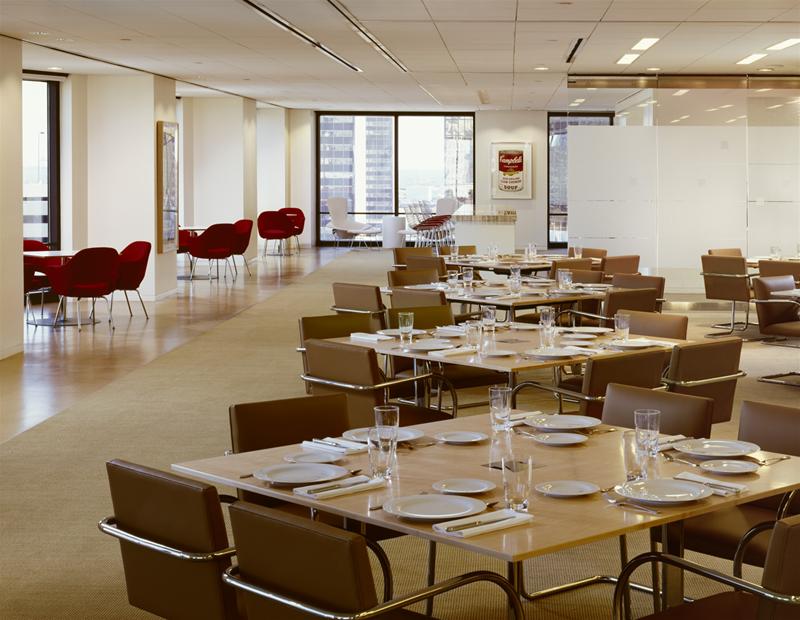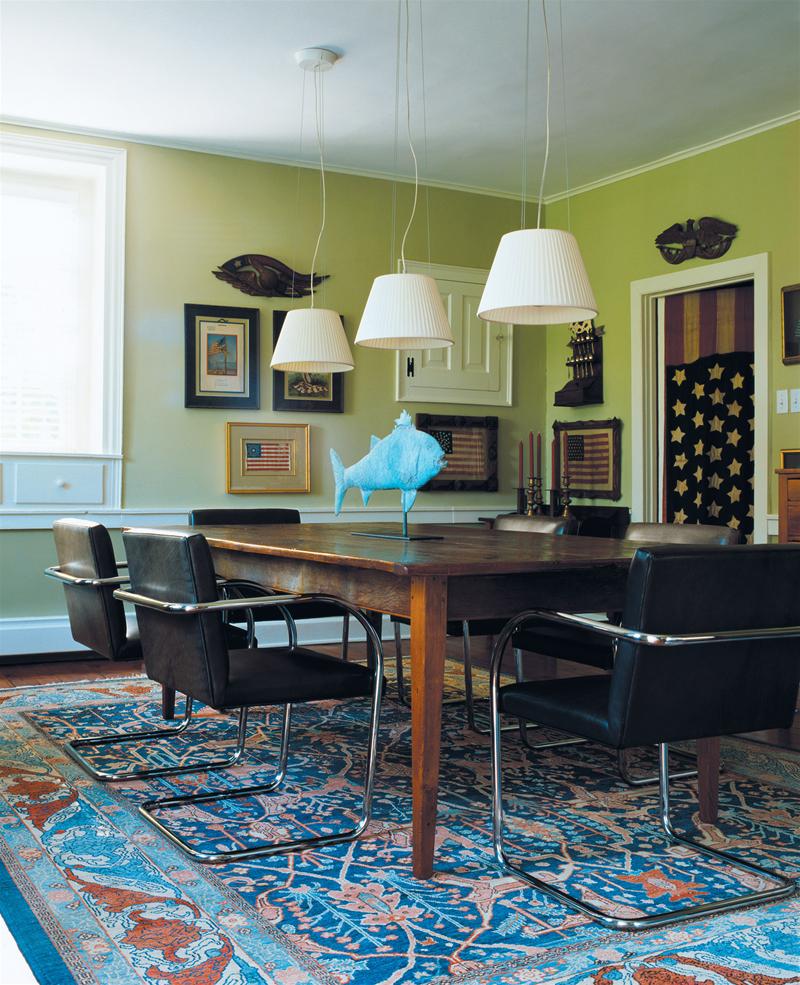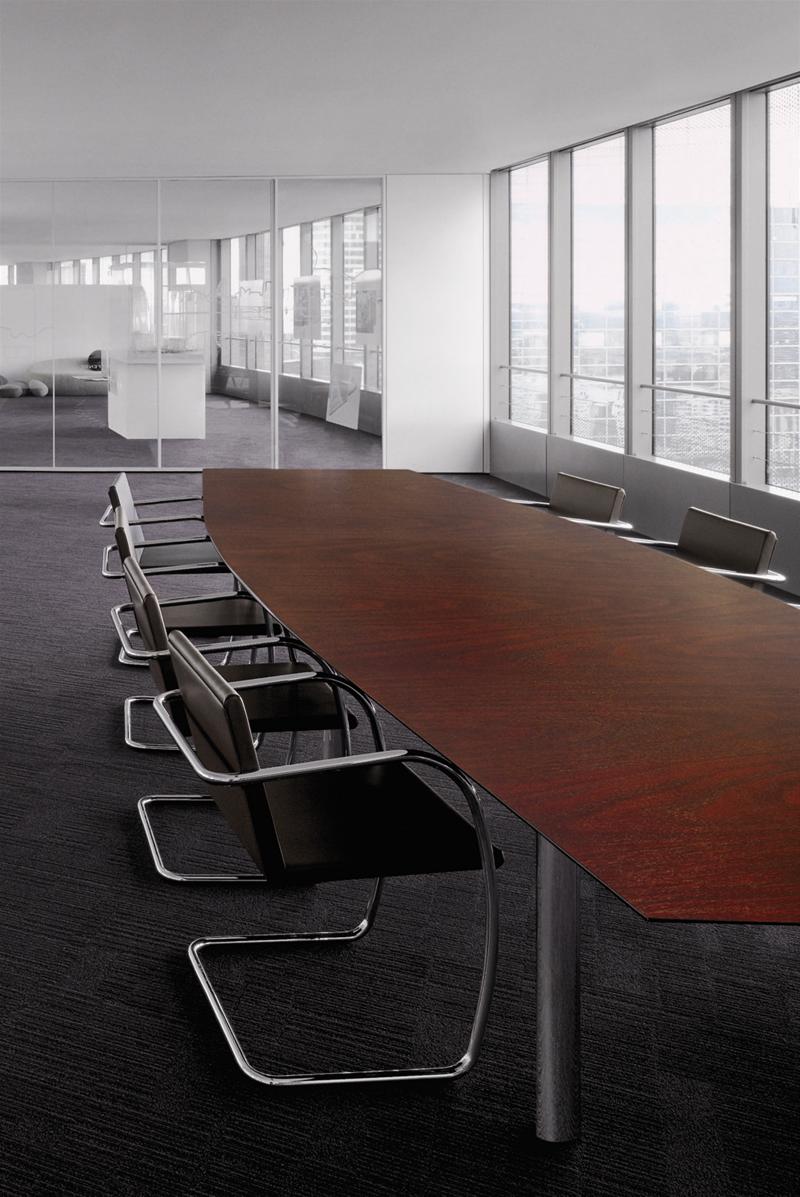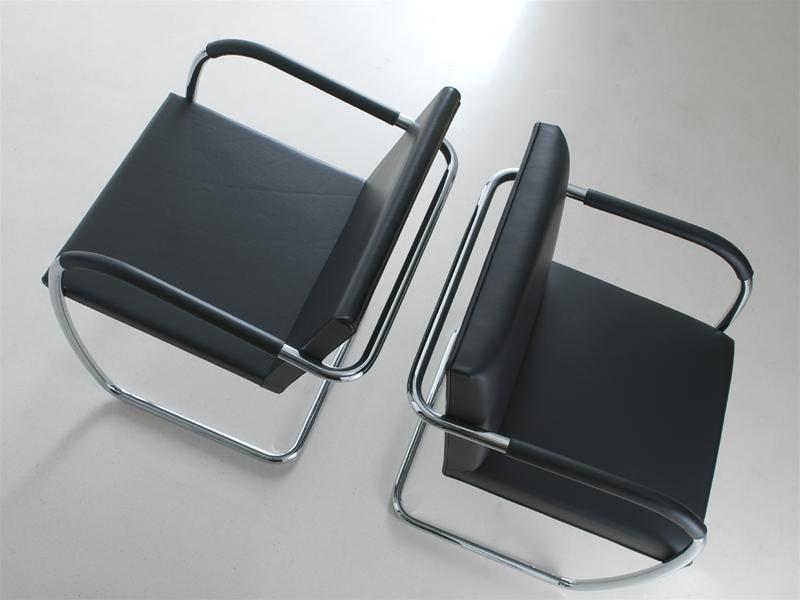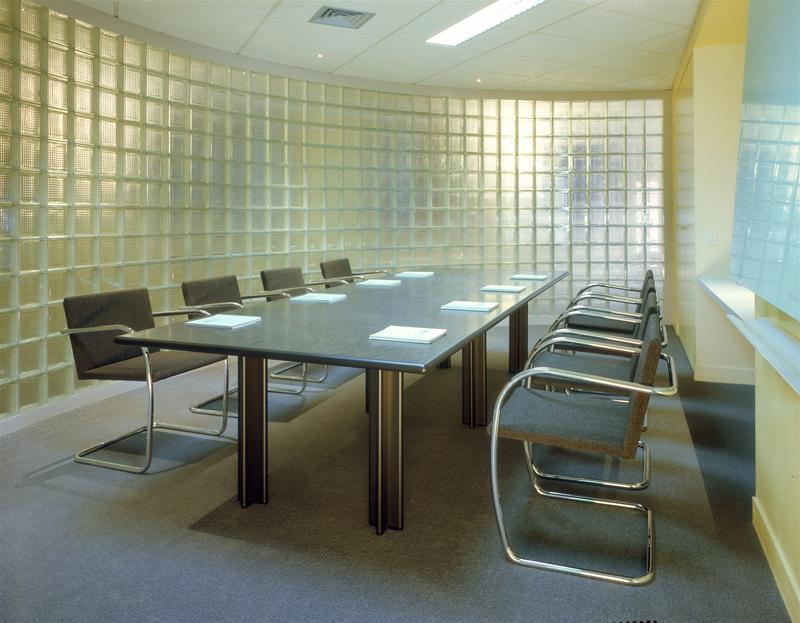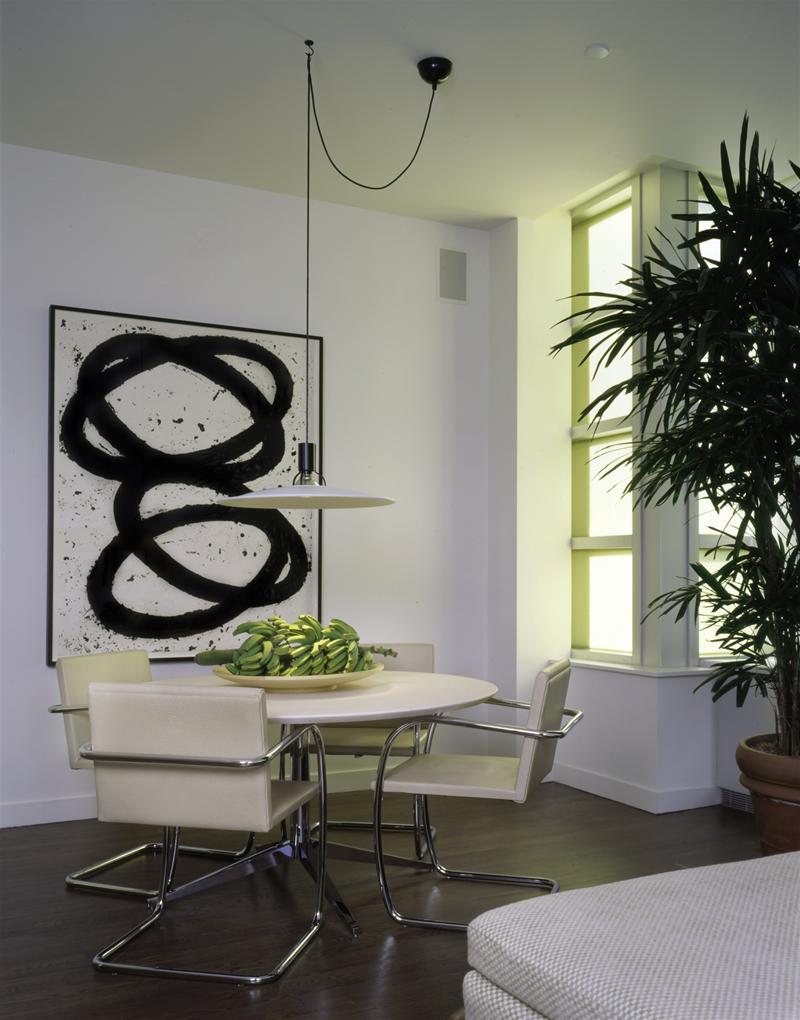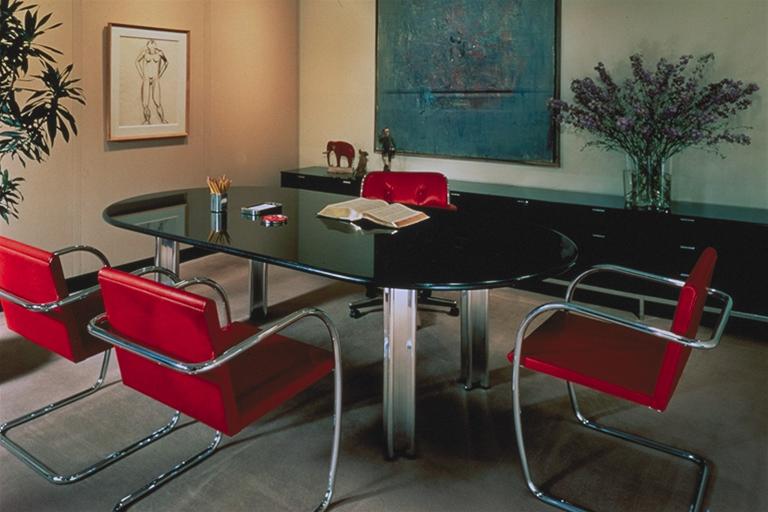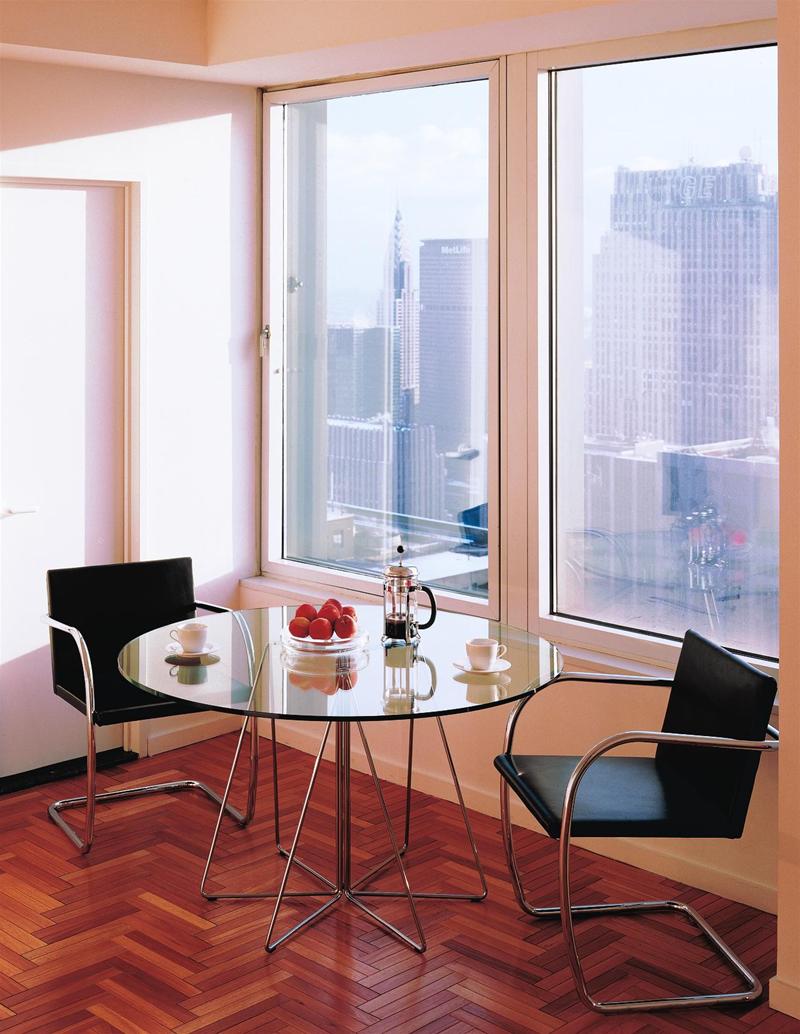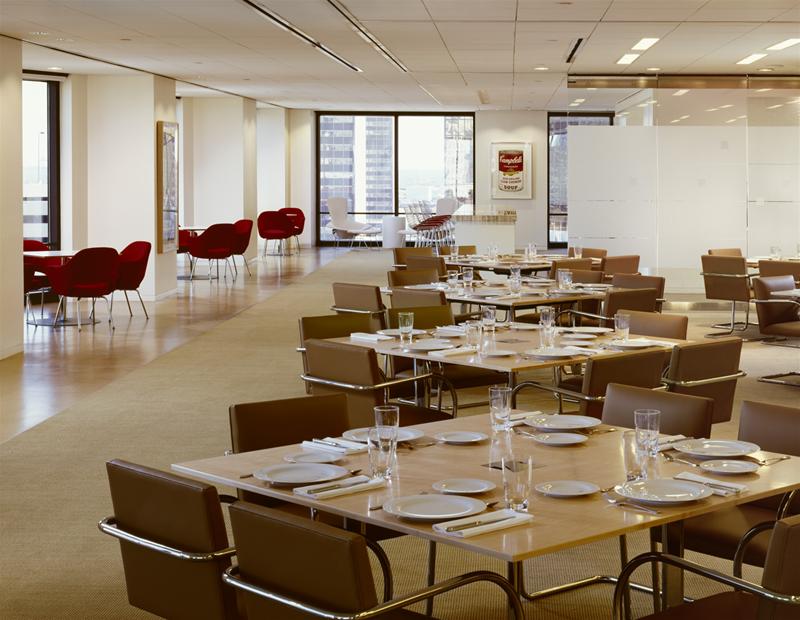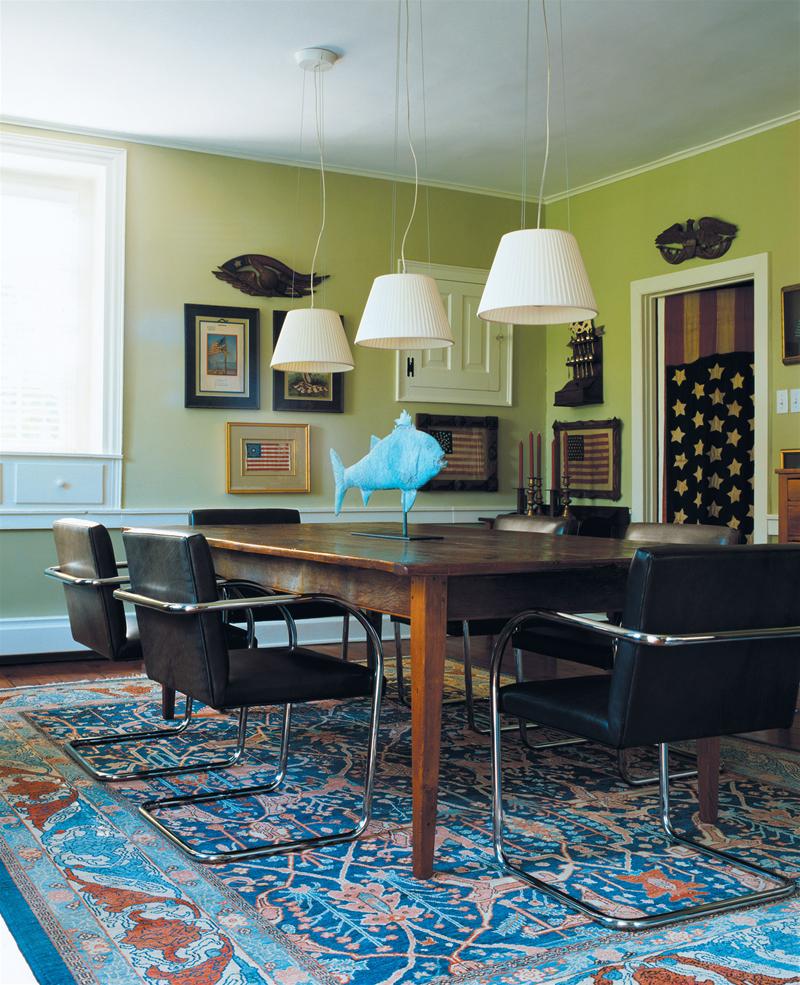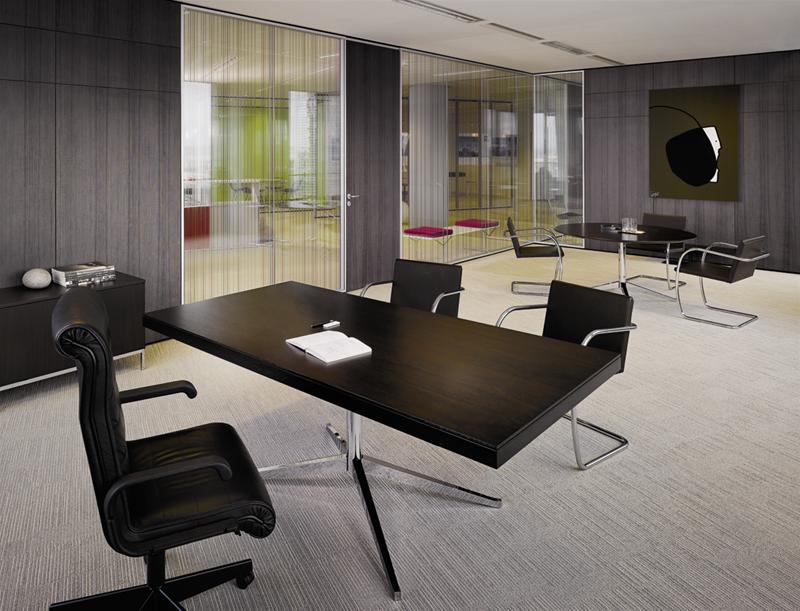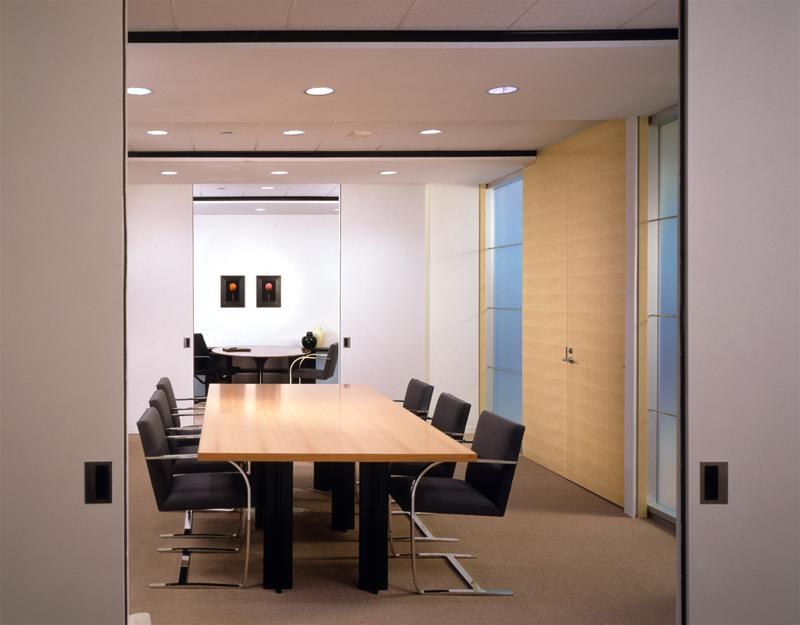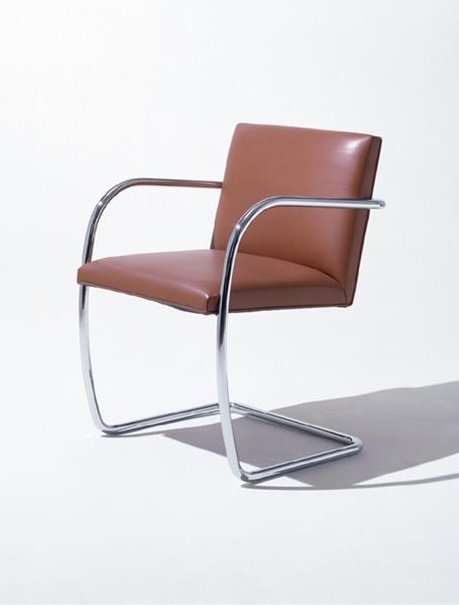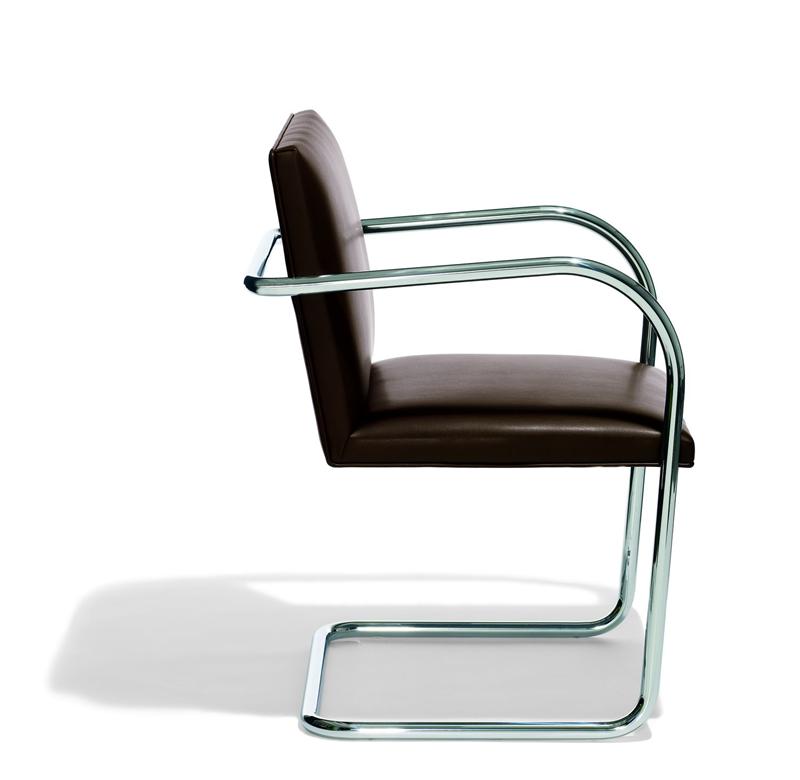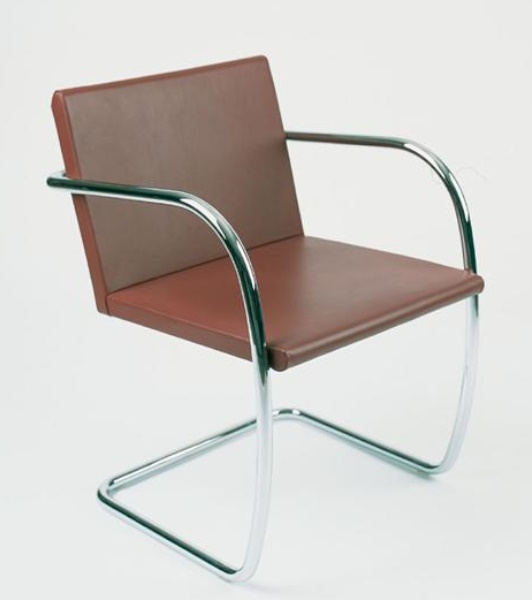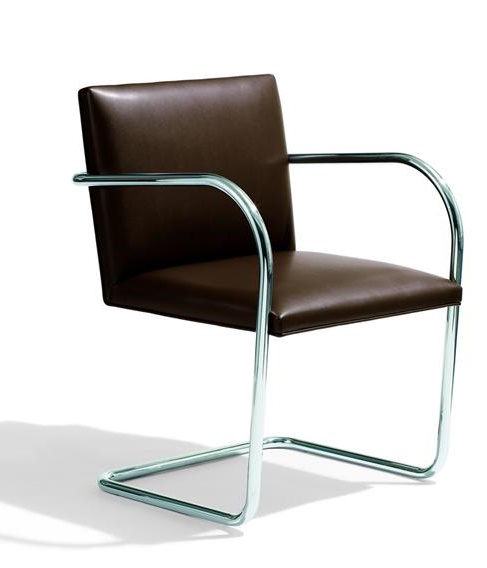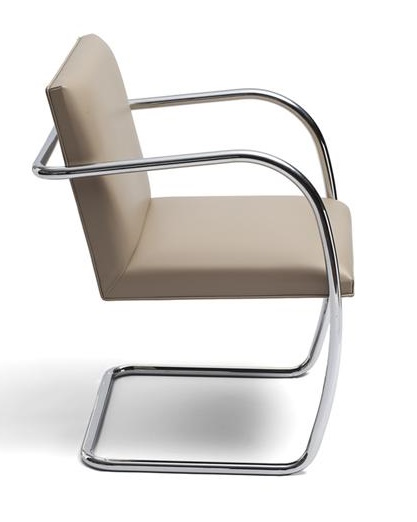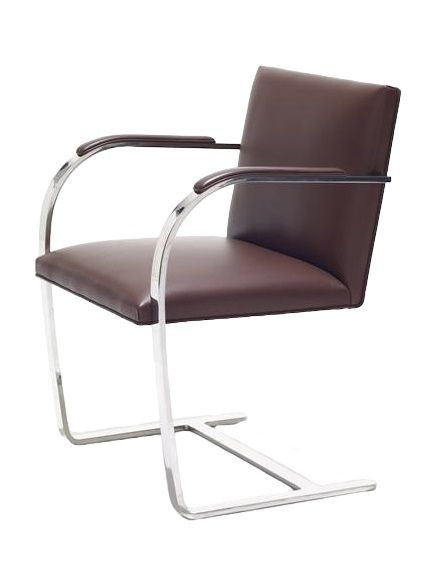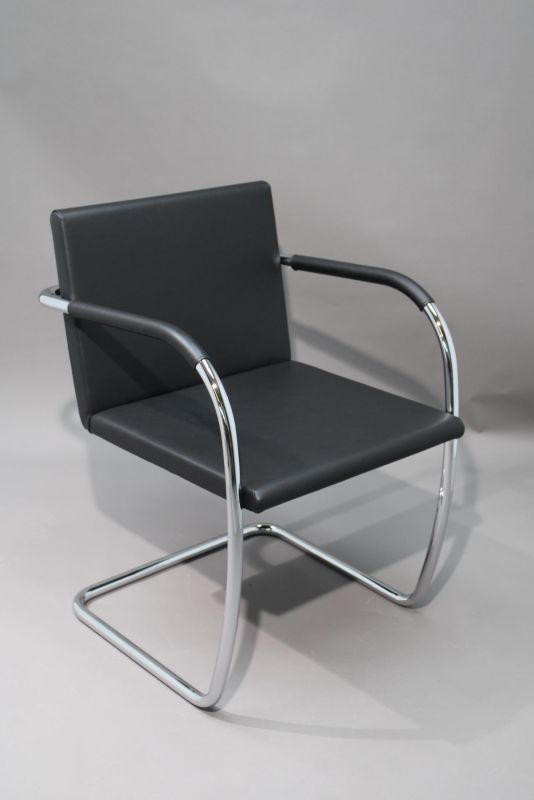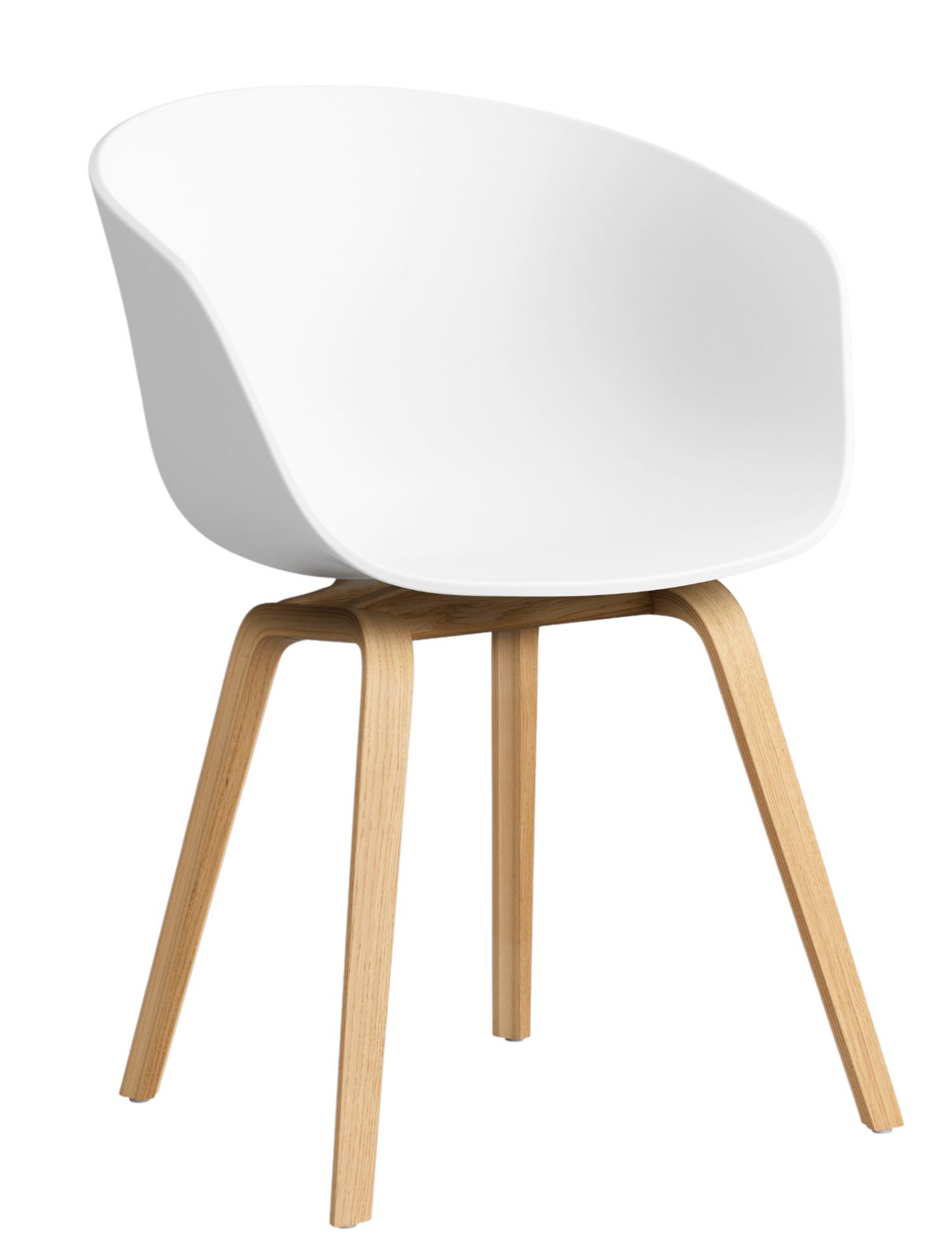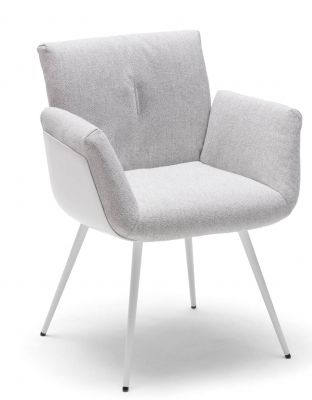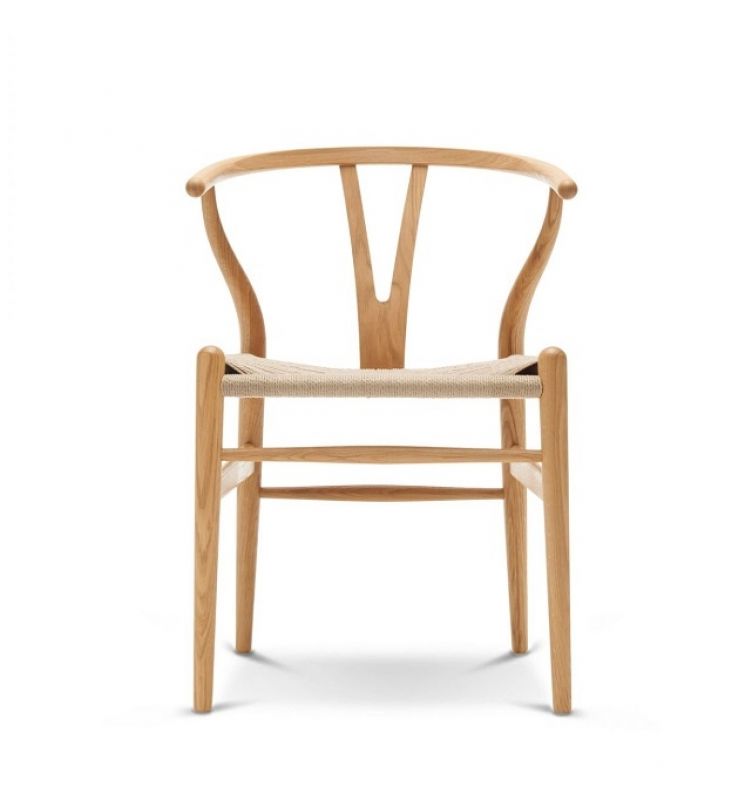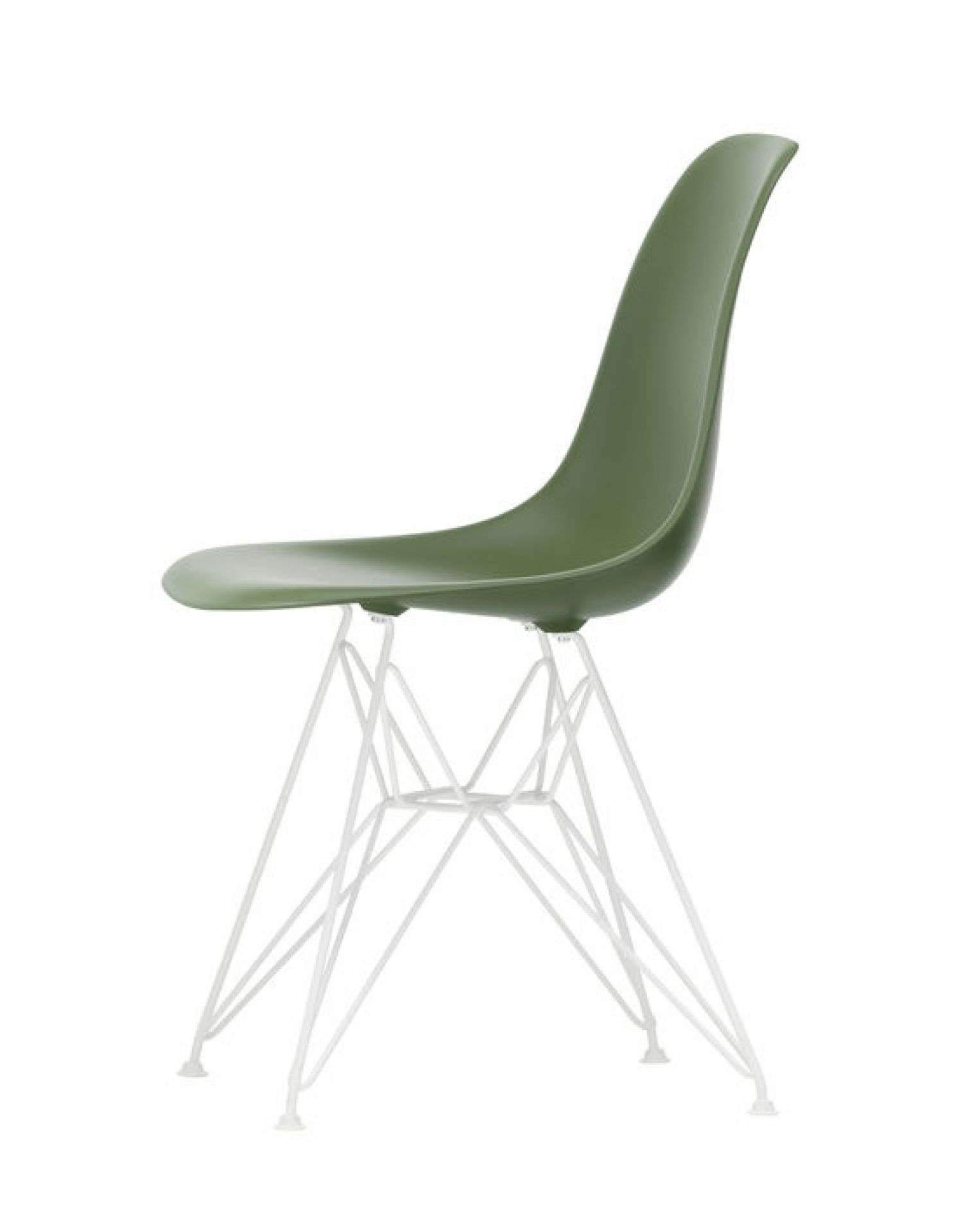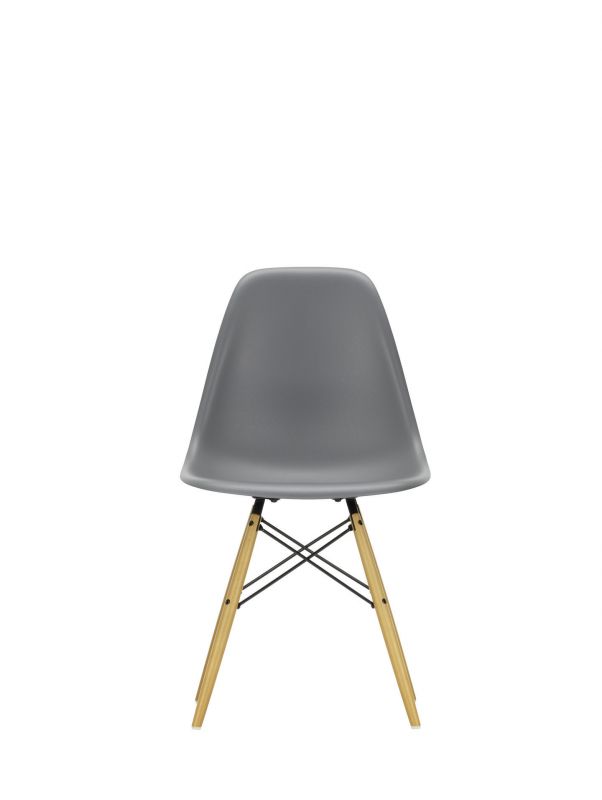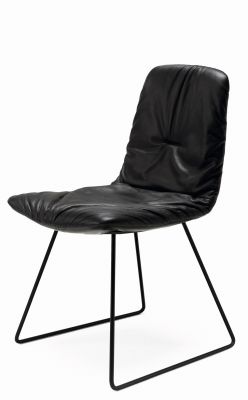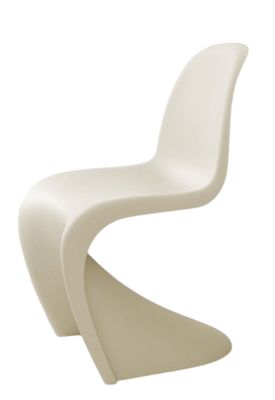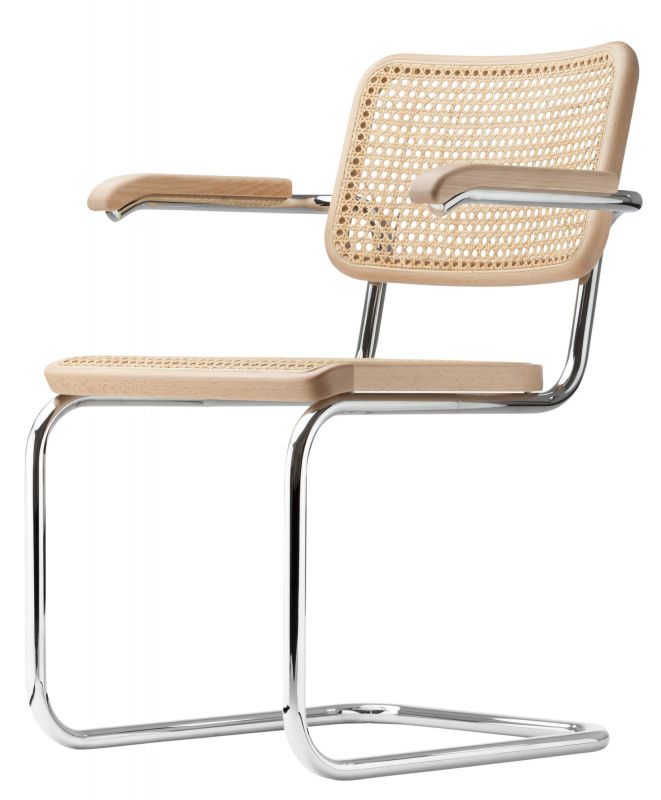- Trained product experts as personal contacts
- Loyalty pays off: 1.5% annual bonus for our customers
- Worldwide delivery from Germany
- Owner-managed for over 25 years - trust our experience!
- Secure packaging and fast shipping - thanks to our professionals!
Brno Tubular Chair Round Tube Knoll International
Your advantages with einrichten design
personal, individual, passionately
-
Description
Focus on the essentials: Brno Tubular Chair by Knoll
Designed by Mies van der Rohe for his famous Tugendhat House in Brno, Czech Republic, the Brno Tubular chair reflects the groundbreaking simplicity of its original surroundings. A simple profile, clean lines and meticulous attention to detail have made Ludwig Mies van der Rohe's 1930 Brno Chair an icon of 20th century design.
The chair captivates with high-quality materials and a simple elegance that is particularly effective in meeting rooms or lounge areas. The "invisible" connection between the frame and the seat make it appear to float and give the cantilever chair that extra touch of lightness.
Ludwig Mies van der Rohe
Ludwig Mies van der Rohe, born in Germany in 1886, began his career in his father's stonemasonry business. After an apprenticeship with furniture designer Bruno Paul in Berlin, he joined the office of architect Peter Behrens, whose work anticipated modernism. in 1912, Mies founded his own office in Berlin, later becoming a member of the Deutscher Werkbund and director of the Bauhaus.
"I feel that it must be possible to harmonise the old and the new in our civilisation." - Ludwig Mies van der Rohe
in 1938 he emigrated to the United States and settled in Chicago. His buildings include the German Pavilion for the 1929 World's Fair in Barcelona, the Villa Tugendhat in Brno, Czechoslovakia, the Seagram Building, which he designed with Philip Johnson, a collection of residential towers along Lakeshore Drive in Chicago, and the campus of the Illinois Institute of Technology, where he was director of architecture. He was also considered a close friend and mentor of Florence Knoll during her time at the Illinois Institute of Technology.
Knoll International - The belief in modern design
in 1938, Knoll International was founded by Hans and Florence Knoll, who drew on the creative genius of the Bauhaus School and the Cranbrook Academy of Art to create new types of furniture and environments for the workplace. Their approach was to combine craftsmanship with technology through the use of design. Florence Knoll also developed the idea of the modern office and pioneered interior design.
Knoll is internationally recognised for creating workplace and home furniture that inspires, evolves and endures. Knoll's thoughtful, inventive products cater to individual work styles and endure for multiple generations. Knoll's commitment to modern, sustainable design and understanding of the workplace results in a unique portfolio. Here, the latest collections line up alongside modern classics and iconic products.
For more than 80 years, Knoll has remained true to the Bauhaus design philosophy that modern furniture should complement architectural space, not compete with it. That is why Knoll uses modern design to connect people with their work, their lives, their world. The essence of it all: modern living and working with a contemporary approach without losing the connection to the past.
Material and format
The basis of the Brno chair is a round tube frame made of seamlessly formed spring steel, high-gloss chrome-plated and thus particularly noble and robust. If you choose the chair without armrests, you can also choose the satin chrome-plated version of the frame. There are no visible connections between the seat and the frame. The scope of delivery includes opaque plastic glides, which can be used as an option when used on hard floors.
The foam upholstery of the Brno chair sits on a veneer wood moulding. A no-sag suspension in the seat adds to the comfort. For the cover, you can choose from many different fabric and leather qualities. You can choose from a wide range of colours. Can't find the cover you want or do you prefer thicker upholstery? We will be happy to provide you with a non-binding offer on request.
Tonus: 90% worsted wool, 10 % Helanca
Hallingdal: 70 % pure wool, 30 % viscose
Velluto leather: smooth, slightly refined aniline-dyed leather
Volo leather: slightly corrected aniline leather with special retannage
If you choose the cantilever chair in the leather version, you can choose between armrests with or without pads.
The Brno chair is 55 cm wide, 63 cm deep and 79 cm high. It has a seat height of 44.5 cm and an armrest height of 66.5 cm. If you would like to combine the chair with a table, please ensure that the table top is sufficiently high.
Dimensions:
- without arm rest: W 55 x D 63 x H 79 x SH 44.5 cm
- with arm rest: W 56 x D 63 x H 79 x SH 46 cm
Special featurethe KnollStudio logo and the signature of Mies van der Rohe are embossed into the frame of each chair.
More - Dimensions / Infos
- Downloads
- Shipping & Payment
Focus on the essentials: Brno Tubular Chair by Knoll
Designed by Mies van der Rohe for his famous Tugendhat House in Brno, Czech Republic, the Brno Tubular chair reflects the groundbreaking simplicity of its original surroundings. A simple profile, clean lines and meticulous attention to detail have made Ludwig Mies van der Rohe's 1930 Brno Chair an icon of 20th century design.
The chair captivates with high-quality materials and a simple elegance that is particularly effective in meeting rooms or lounge areas. The "invisible" connection between the frame and the seat make it appear to float and give the cantilever chair that extra touch of lightness.
Ludwig Mies van der Rohe
Ludwig Mies van der Rohe, born in Germany in 1886, began his career in his father's stonemasonry business. After an apprenticeship with furniture designer Bruno Paul in Berlin, he joined the office of architect Peter Behrens, whose work anticipated modernism. in 1912, Mies founded his own office in Berlin, later becoming a member of the Deutscher Werkbund and director of the Bauhaus.
"I feel that it must be possible to harmonise the old and the new in our civilisation." - Ludwig Mies van der Rohe
in 1938 he emigrated to the United States and settled in Chicago. His buildings include the German Pavilion for the 1929 World's Fair in Barcelona, the Villa Tugendhat in Brno, Czechoslovakia, the Seagram Building, which he designed with Philip Johnson, a collection of residential towers along Lakeshore Drive in Chicago, and the campus of the Illinois Institute of Technology, where he was director of architecture. He was also considered a close friend and mentor of Florence Knoll during her time at the Illinois Institute of Technology.
Knoll International - The belief in modern design
in 1938, Knoll International was founded by Hans and Florence Knoll, who drew on the creative genius of the Bauhaus School and the Cranbrook Academy of Art to create new types of furniture and environments for the workplace. Their approach was to combine craftsmanship with technology through the use of design. Florence Knoll also developed the idea of the modern office and pioneered interior design.
Knoll is internationally recognised for creating workplace and home furniture that inspires, evolves and endures. Knoll's thoughtful, inventive products cater to individual work styles and endure for multiple generations. Knoll's commitment to modern, sustainable design and understanding of the workplace results in a unique portfolio. Here, the latest collections line up alongside modern classics and iconic products.
For more than 80 years, Knoll has remained true to the Bauhaus design philosophy that modern furniture should complement architectural space, not compete with it. That is why Knoll uses modern design to connect people with their work, their lives, their world. The essence of it all: modern living and working with a contemporary approach without losing the connection to the past.
Material and format
The basis of the Brno chair is a round tube frame made of seamlessly formed spring steel, high-gloss chrome-plated and thus particularly noble and robust. If you choose the chair without armrests, you can also choose the satin chrome-plated version of the frame. There are no visible connections between the seat and the frame. The scope of delivery includes opaque plastic glides, which can be used as an option when used on hard floors.
The foam upholstery of the Brno chair sits on a veneer wood moulding. A no-sag suspension in the seat adds to the comfort. For the cover, you can choose from many different fabric and leather qualities. You can choose from a wide range of colours. Can't find the cover you want or do you prefer thicker upholstery? We will be happy to provide you with a non-binding offer on request.
Tonus: 90% worsted wool, 10 % Helanca
Hallingdal: 70 % pure wool, 30 % viscose
Velluto leather: smooth, slightly refined aniline-dyed leather
Volo leather: slightly corrected aniline leather with special retannage
If you choose the cantilever chair in the leather version, you can choose between armrests with or without pads.
The Brno chair is 55 cm wide, 63 cm deep and 79 cm high. It has a seat height of 44.5 cm and an armrest height of 66.5 cm. If you would like to combine the chair with a table, please ensure that the table top is sufficiently high.
Dimensions:
- without arm rest: W 55 x D 63 x H 79 x SH 44.5 cm
- with arm rest: W 56 x D 63 x H 79 x SH 46 cm
Special featurethe KnollStudio logo and the signature of Mies van der Rohe are embossed into the frame of each chair.
| Product number: | KNOLL INT 245 |
|---|---|
| Manufacturer | Knoll International |
| Design Year | 1930 |
| designed in | 1930 |
| Designer | Mies van der Rohe |
| Shipping method | Forwarding agent |
| Material | Round steel |
Knoll International SpA
Piazza Bertarelli, 2
20122 Milano
Italien / Italy
www.knoll-int.com/home
Related products of Brno Tubular Chair Round Tube Knoll International
£1,891.18* £1,169.12*
In stock
You might also like
£238.97* £203.13*
